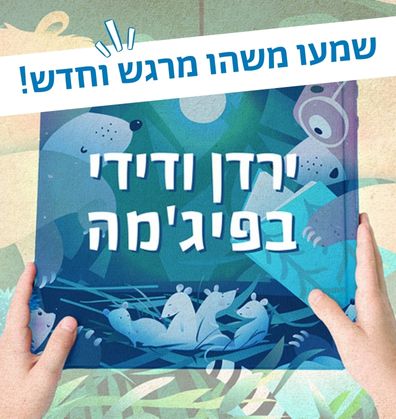סְּפָרִים
Book-Related Family Activities

Family reading advice
Simple rhyming stories can convey a value-based, meaningful message too. We recommend using the story as a basis for discussion, allowing for opinions to be expressed and questions asked, such as “How would you have felt if you had been in a similar situation?”
The Tree of Stars

“… And happiness shall be yours!”
Grandpa is happy to return home with his stars, calling them his treasure, and valuing them more than money. Following this story, you can discuss with your child and ask: “What makes you happy that money cannot buy?” Drawing? Bedtime stories? Perhaps a good-morning hug? Parents can also share – what is their treasures?
The Tree of Stars
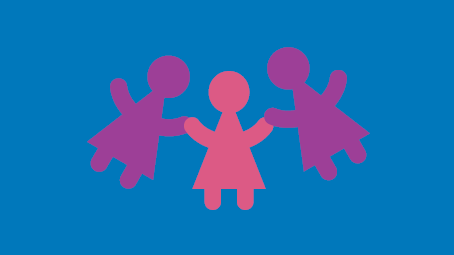
Our tree
If you were to have your very own imaginary tree – what would it grow? Hearts? Balloons? Perhaps stars too? You can draw and cut out the shape you have imagined, decorate it, and even write wishes or shared memories on it. The finished product can then be hung on a plant, branch, or tree near you.
The Tree of Stars

Starwatching
We may not find a real star tree, but we can always take an evening stroll and enjoy the sight of the stars twinkling in the sky. You can take this book along with you and read it together by starlight.
The Tree of Stars

QR code
Poet Leyb Morgentoy, 1905–1979, was born in Pinsk, Poland. He wrote this poem in Yiddish in 1938. Yoram Taharlev translated it, Nurit Hirsh composed music to it, and, in 1969, Chava Alberstein performed and recorded it.
Scan the QR code to listen to the song:
The Tree of Stars

Arts & crafts, songs, and other activities can be found on the Sifriyat Pijama Pinterest page.
The Tree of Stars

Family reading advice
Books containing very few words allow us to tell an emotional and experiential story as we follow the main character in the book: What is he feeling? What is he thinking about? When is he sad and when does he get a new idea? You can look at the illustrations, get to know the main character and his experiences, link them to your own lives and, most of all, add something of yours to this experience that is being described in so few words and in heartwarming illustrations.
The Gift of Nothing

A gift of something
Did Mooch only give Earl an empty box for a gift? You can discuss gifts that cannot be put into boxes: Which free gifts can you give one another? A hug? A drawing? How about warm loving words?
The Gift of Nothing

A box of nothing
You can also have your own box of nothing. Take a box or paper bag, decorate it with paper, drawings, stickers and decorations. Whenever you are bored, open the box and use your imagination to decide what is in it: Maybe it contains an imaginary ball that you can pretend to toss between you, or an imaginary story that you have made up together, or any other invention with which you can come up.
The Gift of Nothing

Our books
Have you tried reading a book using a bird’s voice? Perhaps you happen to own a red book? Scan the code and you can play a game that encourages reading using the books you have at home. You can even get a certificate at the end of it!
The Gift of Nothing

Doing nothing
What happens when we do nothing? You should take a few minutes to sit quietly and listen. What can you hear? What can you see? What can you feel with your body? You can share your experience with your family and think together: Does nothing really happen when we do nothing?
The Gift of Nothing

More arts & crafts, songs and other activities can be found on the Sifriyat Pijama Pinterest page
The Gift of Nothing

Family reading advice
A book can convey an idea in just a few words. In such a book, the illustrations are a window enabling observations and discussions about the world of children. Through them, we can discover how imagination and creative thinking can turn seemingly worthless things into valuable ones. You should take a close look at the illustrations and what they tell us and ask: Is a bottle cap that does not fit any bottle qualify as garbage? What else can pipes be used for?
Just the Sea

What does stam (“just” or “nothing much”) mean?
You can discuss and ask: What do we do at home that qualifies as stam (nothing much)? What does stam (“just” or “nothing much”) even mean? Do we enjoy things that we do stam? How about we do something stam together right now?
Just the Sea
How does a hoop turn into a hot air balloon?
And how can we encourage creative thinking? Scan the code and watch some creative ideas.
Just the Sea

Stam (“just”) objects
Just like in the video, you too can look for an item and invent a new use for it: What can you do with “just” a bottle? And how can you play with “just” a paper roll?
Just the Sea

Shapes in the sand
Following the arts & crafts in this book, you too can go outside and check: What do you see when you make a shoe imprint in the sand? Or an imprint of your hand? Or a leaf? And what can you draw in the sand using a stick?
Just the Sea

More arts & crafts and other activities can be found on the Sifriyat Pijama Pinterest page
Just the Sea

Family reading advice – Books everywhere
Like many toddlers, Berale also asks Grandma – “What are we going to do now?”. Among the surprises Grandma keeps in her basket is a book that they can read whenever they want. A book is a world unto itself that can be taken anywhere quite easily. You can also keep a book in your bag, and enjoy it while waiting for a doctor’s appointment, relaxing in the park, or taking a long car ride.
Berale Berale What’s in the Basket?

Discussion – Special times with loved ones
You can discuss your toddler’s relationship with Grandpa, Grandma, or other significant family members and ask – What do you enjoy doing together? Are there any special activities that you only do with your grandparents or uncles and aunts? Are there any special items that only they have at home?
Berale Berale What’s in the Basket?

A made-up story
Grandma’s stories make Berale laugh because they are made-up, and unusual things can happen in our imaginations. Try making up your own story, like “The Hippo that Fell into a Soup Bowl”, “The Lion Who Was Afraid of Being Left Alone at Night”, or any other idea that comes to mind. You can start with an object you see around you, and take it from there.
Berale Berale What’s in the Basket?

Grandma baked a cake…
Do you know the fingerplay that accompanies the nursery rhyme “Round and Round the Garden”? Or the Israeli version “Savta Bishla Dasya” (“Grandma made some porridge”)? You can play a similar game by bending your fingers inwards and leaving your thumb out to create a ‘snail’. Your toddler’s upturned palm can be the bowl. Now say: “Grandma and Berale baked a cake. They added flour, they added sugar, they added eggs…” while touching your toddler’s upturned palm with your thumb as you name each ingredient. You can take turns being Berale and the mixing bowl.
Berale Berale What’s in the Basket?

For more ideas and surprises, check out the Sifriyat Pijama Pinterest page.
Berale Berale What’s in the Basket?

Reading-assisting touch
Toddlers need physical contact. That is why you should sit close to one another while reading, hug, touch, and look into each other’s eyes every once in a while. That way your toddlers will experience story time as a warm and relaxing activity that makes them feel loved and safe.
The Hill Tickle-Tickle

Tickles and games
You can ask your toddlers – do you like tickling games? Which of the games that we play together do you enjoy? What would you have liked us to play? In relation to the mother’s telephone call in this book, you can also ask – how did Gan-Yah feel when her mother went to answer her phone? How do you feel when you have to wait?
The Hill Tickle-Tickle
There’s a hill in this house
You can play the same game they play in the book: Your toddler or another family member can hide under a blanket and become a hill. You can tickle the hill, feel it and search – where’s the hill’s foot? Where is its head?
*Some children are hypersensitive to touch or tickles, and therefore, it is important to remind players before the game that one can say “stop” at any point, just like they do in the book.
The Hill Tickle-Tickle

Moving together
There are many body movements in this book. You too can jump, dance, roll or lift your legs up in the air just like the hill does. You can look at the illustrations and copy Gan-Yah’s movements too.
The Hill Tickle-Tickle

For more ideas for activities, check out our Instagram page and discover more surprises.
The Hill Tickle-Tickle

Identifying and indicating
Here’s the sea! Here’s a mountain! And a butterfly too! As toddlers grow, they enjoy pointing at everything they recognize in the illustrations. You could pause on each page, take a look together, and discover what your toddlers already know. You could ask them to indicate where the rabbit is, and, if they struggle, look for it together.
There’s A Rabbit on The Train

From the book to the outside world
You could continue the journey that began in the book with a game at home, played while kneeling, saying “choo choo” and adding the hand gesture, or on the rug with some toys. You may enjoy looking out of the window together, seeing what is going on outside, and saying: “There’s a traffic light! Here’s a tree! And what else can you see?”
There’s A Rabbit on The Train

Some reading advice: How do voices and facial expressions help when reading?
Toddlers are fascinated by the tone of voice, facial expressions, sounds and gestures of the person who is reading to them: All of these help them follow the story, enjoy and understand it. Allow yourselves to be actors for a few minutes. You have won the best audience, who is sure to appreciate and enjoy your unique reading style.
There’s A Rabbit on The Train
A little advice for family reading
To make family reading enjoyable, and encourage children to read, we should choose books to which children relate and explore topics in which they are interested. Some prefer a piece of fiction, while others would want to read a story that “once was”. Whatever their favorite book may be, it would encourage them to enjoy books, while helping them to develop their imagination and creativity.
The Machine
A discussion on belongings and memories
You too could look for items that remind you of past experiences: A family photo, gift you have received, or item associated with an experience you have had. Take turns introducing the object of your choice and sharing a memory relating to it.
The Machine
Listening to the story
What does Grandpa sound like? Does the machine make sounds? By scanning the QR code you too can listen to the story together or separately.
The Machine
Building something
Are you interested in making a machine of your own? You can gather some boxes, fabrics, crates and old toys to build your very own machine. You can plan what it would do and look like together, or simply build it and discover its attributes as you go along.
The Machine
Illustrations – Where are the machines?
Many of the illustrations in this book depict machines. Perhaps you would enjoy leafing through them and finding illustrations of machines and machine parts – Can you tell what each of them does? Perhaps you could be inspired by the part you found to invent a new machine, and imagine what it is capable of doing.
The Machine
A Discussion on problem-solving
What can we do when we encounter a problem? You may want to share incidents with your children in which you, parents, have encountered a problem. Try to think back to how you felt, think of possible solutions together, and then tell them how you solved the problem.
One, Two, Three, What Can a Mushroom Be?
What can we do with…?
A hoop can be a steering wheel, a plate or… Scan the QR code and watch a video about creativity? Later, you can continue to think about – What can we do with a paper roll? A kerchief? A dwarf puppet?
One, Two, Three, What Can a Mushroom Be?
Singing together
The dwarves planted mushrooms and sang “all the songs they knew”. You too can sing your favorite songs together. Perhaps you’ll sing about dwarves, or rain, or songs that cheer you up and make you smile.
One, Two, Three, What Can a Mushroom Be?
A Game of “Which Dwarf am I?”
Take turns pretending to be one of the dwarves that appear in this book: The one with the umbrella, the one planting a mushroom, or the one jumping into puddles. The other players will try to guess what the dwarf is doing and find it in the book.
One, Two, Three, What Can a Mushroom Be?
One, Two, Three, What Can a Mushroom Be?
Pleased to meet you, I’m Hyla!
I’m similar to a frog but smaller. I can be found in Israel, mostly on trees, eating insects and laying eggs in water. I am a protected species and therefore cannot be kept in a jar – only in nature.
One, Two, Three, What Can a Mushroom Be?
Reading together
While reading, it is useful to include the hands on each page, follow their path and imitating their movements. Parents and toddlers can do this together: “walk” the hand on fingertips, make the hand jump, knock on the door in the picture, and be active readers throughout the entire book.
A book about A hand
Hand Games
It’s so much fun to play with hands! Each and every one in turn makes a certain movement, and the rest of the participants imitate it. You can clap your hands, wave hello or goodbye, signal for “quiet” or fly!
A book about A hand
A Family of Hands
Who has a small hand? Who has a large hand? Each family member is invited to place their hand on a sheet of paper. You, the parent, will draw the contours of the hands, and the toddlers will decorate and paint. The picture of all the hands can be kept as a memento, and you can also repeat the activity year after year and see what has changed.
A book about A hand
Singing Hands
You can sing songs accompanied by hand movements, such as “I have ten fingers” or “My hat has three corners.” It’s a good idea to add hand gestures to your singing, and you can add finger movements to other favorite songs. Have fun!
“עשר אצבעות לי יש” מאת רבקה דוידית
מחרוזת שירי ידיים מאת דתיה בן דור
A book about A hand
Pinterest – Crafts, songs, and activities in the Sifriyat Pijama’s Pinterest page.
A book about A hand
Discussion
Parents may want to share the stories they liked while growing up: Was there a particular story you enjoyed hearing over and over again? Who was your favorite protagonist? You could ask your child which stories they like. Are they fictional or true stories?
Mr. Zinger’s Hat
Dual role illustrations
When do the illustrations tell the story of Leo and Mr. Zinger, and when do they complement the story the two of them made up? You may enjoy taking a look at the illustrations together, noticing the various styles, and thinking of ways of discerning what the illustrations refer to, and what they are telling us.
Mr. Zinger’s Hat
The story in the hat
Which stories are hidden in the hats you own? how about choosing one of your favorite hats and telling the story that is hiding in it: one player looks into the hat and starts inventing a story. After one or two sentences, they pause, and the next player picks up the story, and so on, until all players have added their part to it. Bashevis Singer could serve as a source of inspiration for telling a family story that has been passed down in your family.
Mr. Zinger’s Hat
A game – Who am I?
Would you like to play a game? Perhaps you would enjoy writing the names of your favorite characters from books on pieces of paper, and taking turns wearing a hat bearing the name of the character. Whoever wears the hat does not see the name written on the piece of paper attached to it, and must guess who it is using questions, such as: Is it a fictional character? Is it an animal?
Mr. Zinger’s Hat
פינטרסט
Mr. Zinger’s Hat
Discussion
Perhaps you could discuss and share with one another the experiences you recall of moments in which you had discovered a new ability: Writing your first name, a special drawing you had made, and what else? What other new abilities would you like to discover?
Le Cadeau (The Gift)
Illustrations tell their own story
The illustrations in The Gift invite readers to immerse themselves in the book, and be part of Leo’s world: Which animal accompanies Leo? Which animals appear in the illustrations? Which details are taken from the world of children, and which from that of animals? Would you like to make your own drawing following Leo’s?
Le Cadeau (The Gift)
What's penned up in your pen?
Which incredible things await you in your pen? You may enjoy dedicating a notebook to drawings, copying words out, or writing down your favorite ones. You could make it a family notebook, in which each member adds their own illustrations and words.
Le Cadeau (The Gift)
A joint painting
What sort of world is hiding in your pen? Grab a pen and paper to find out! You and your family can take turns adding detail to a shared drawing – a line, circle, character, or item – to create a joint work of art that has come out of a single pen!
Le Cadeau (The Gift)
Pinterest – Arts & crafts are on the The Gift page on the PJLibrary Pinterest.ּ
Le Cadeau (The Gift)
Discussion
Matan piles the sand up and makes his pile more sophisticated all on his own. having read this book, you may want to discuss actions with your child that they take without needing any help, and compare them with actions they had taken in the past. We recommend that you, parents, share your own similar experiences with them, from your own childhood: What is it that you wanted to accomplish, and indeed did? What does your child want to build and do? Do they need materials or help? You may want to decide on a family initiative to build, make or fix something together. Good luck!
Matan and the Great Sand Mountain
The sands of time
What can we do with sand? We could make an imprint of our feet in it, and observe our family members’ different footprints. How about using twigs to draw in the sand, or piling it up, or going outside to look at different prints left in it there?
Matan and the Great Sand Mountain
Perspective
The illustrations in this book were made from various perspectives: from above or below, from high up or far away. Looking at the world from different perspectives – high or low – allow us to discover surprising things: try looking at your room from an ant’s height; through binoculars made from toilet paper rolls; using a magnifying glass, or when standing on a chair: What can you see from that perspective that you couldn’t see from your regular angle?
Matan and the Great Sand Mountain
Imagining and building
Matan and his sandcastle could inspire you to imagine, plan, and create too: close your eyes and imagine, then share your idea with your family, look for suitable materials, and start to build together. It could be a machine made out of boxes, a car made out of sand, a flying castle made of pillows, or perhaps something else entirely.
Matan and the Great Sand Mountain
Matan and the Great Sand Mountain

Just before bedtime...
How do you get ready for bed? What helps you fall asleep? You can talk about it together and think about creating a set ritual that will engender calm, and let you share the day’s experiences and thoughts that come to mind.
One Last Thing before Bed

My notebook of thoughts
Isn’t it lucky that there’s a way we can remember our thoughts and stop them from getting away? How do we do that? Keep a notebook and pencil by your bed, and just before falling asleep, before your thoughts scatter away, draw them. You can color in your drawing in the morning, because now… is time for bed.
One Last Thing before Bed

It's lucky that... It's good that...
“It’s lucky that a pot has two handles, and not five… if it did, how would we hold it?”, “It’s good that the windshield is made out of glass, not cardboard”. What do you imagine? Which things make you happy just as they are? Each member of the family can bring a certain object and talk about it: “It’s lucky that…”, “It’s good that…”.
One Last Thing before Bed

Melodies, sounds and colors
The world is filled with melodies and sounds. Which melody do you like? Try singing a favorite melody together wile clapping your hands, moving parts of your bodies, singing, or playing instruments.
The world is also filled with diverse colors and shapes. You can draw as you listen to the music. Which shapes and colors will you choose for your drawing?
One Last Thing before Bed

One Last Thing before Bed
Illustrations tell a story
The illustrations in this book demonstrate how Itamar and the rabbit imagined one another versus what they really look like. You may want to check and compare: Do the monsters resemble the real child and rabbit? Are there any similarities between the monsters both Itamar and the rabbit had imagined?
Itamar Meets a Rabbit
Discussion
Were you, parents, also afraid when you were younger? Perhaps you could tell your children what you were afraid of, and how you grappled with your fear. You could also listen to your children as they tell you what scares them, and together, think of ways to overcome the fear.
Itamar Meets a Rabbit
Pleased to meet you: Monster
What does a scary monster look like? How about drawing one together, and then trying to imagine: What is the monster’s name? Who are its friends? What does it enjoy doing, and what is it afraid of? Now that you’ve gotten to know the monster, it may be worth asking yourselves whether it is still as scary as it was before.
Itamar Meets a Rabbit
A family magic word
“Jimalaya Jim! Zuzu buzu Yam Pam Puzu!” Each of the characters in this book has a magic word it uses when something scary happens. What is your magic word? You’re welcome to chose a family magic word together, and think of times when it would be appropriate to use it.
Itamar Meets a Rabbit
Itamar Meets a Rabbit
Discussion
You may want to discuss and share what you enjoy doing with grandma, grandpa, or other family members, and have the parents talk about their own childhood experiences. You could even do stuff remotely and still feel close: some suggestions for activities that bring you closer while being carried out from afar can found in the “granny’s stories” section on the PJLibrary website.
Ronnie’s Stories: Ronnie’s Apron
What do we see in the illustration?
You could check out the drawings on the aprons at the end of the book, and even create your own “family doodle”, with each member of your family adding to the artwork. When you’re done, you can look together to find out whether any shapes of objects or characters are hiding in the doodle you made.
Ronnie’s Stories: Ronnie’s Apron
Illustrations – look for me
Look at the illustrations together and find out what the cat does on each page or where there are strawberries. You could search for certain items, or choose a color and look for details painted in that particular color in all the illustrations.
Ronnie’s Stories: Ronnie’s Apron
What did you do today?
Paint stains on palms, sand in shoes, or food stains on clothes are all indications of what your child did in kindergarten today. Together, you could look at the traces left by their action-packed day. Can you, parents, use the signs to try and guess what your child has done today, and discuss their experiences with them?
Ronnie’s Stories: Ronnie’s Apron
Pinterest – Suggestions for arts & crafts, games, doodles and strawberry growing are available on the Ronnie’s Stories: Ronnie’s Apron page on the PJLibrary Pinterest.
Ronnie’s Stories: Ronnie’s Apron
Discussion
Following the childhood story the father tells his child in this book, you could also share memories and stories from your own childhood with your child: Where did you grow up? What did you like doing? Which songs and stories accompanied you? What were your hobbies? Did you have any household chores or special roles to play within your family? Perhaps you had some pets?
You could also look at the illustrations in the book, choose your favorite one, and share your choice with each other.
The Magic Flute and the Dancing Sheep
A family story
How about asking some family members to share their stories of life transitions with you? Which countries have they lived in? how did they end up in Israel, and how was their absorption? Did they move into a new community upon making Aliyah? You could act the stories you were told out, or tell them using a song and dance.
The Magic Flute and the Dancing Sheep
A magical tune
Melodies can have a profound effect on us. In the spirit of this book, you could listen to different tunes together, close your eyes, “enter” the melody, and dance to it.
The Magic Flute and the Dancing Sheep
Jerusalem of Gold
At the end of the book, Jerusalem is depicted as golden, just as it was in the Ethiopian immigrants’ dreams. The phrase ‘Jerusalem of Gold’ was mentioned in Jewish scripture as the name of the golden jewel that Rabbi Akiva gave his wife, etched with the image of Jerusalem. Inspired by it, Naomi Shemer wrote the lyrics and music to her song, so entitled, which became one of the most well-known and loved Israeli songs. Perhaps you could ask your child why they think Jerusalem was called that, listen to the famous song together, or play it as an ensemble.
The Magic Flute and the Dancing Sheep
The Magic Flute and the Dancing Sheep
Discussion – If I had a magic hat
If you had such a wondrous hat – where would you want it to take you? And what would you ask of it? You may enjoy looking at the illustrations and telling each other which place you would have liked to visit, who you would have wanted to meet, and which memento you would have liked to bring back with you.
Galilea
Being creative – Following the magic hat
This book is an homage to the poem Magic Hat and the poetess who wrote it, Leah Goldberg: Gali-Lea. Leah Goldberg was one of the first and most important Hebrew children’s literature writers. You could also be creative by using this poem as an inspiration: sing the song entitled Magic Hat, dance along, wear hats, and act out both poem and story about Galilea. You could even make your own magic hat, and decorate it; who knows where it might take you?…
Galilea
Being explorers
Which beautiful places have you visited or would you like to visit? You may want to make a photo album or scrapbook filled with places close to home or far away, realistic or imaginary. You could even invite friends and family over, and ask them to tell you about where they born or the places they’d visited: Where are these places? Have you ever visited them in your dreams? What was it like there – was it hot or cold? Quiet or noisy? And… what was coming home like?
Galilea
Playing the movement game: Cold – Hot, Wet – Dry
Make a large paper circle and divide it up into eight equal parts. Write the following in them: cold, hot, wet, dry, up, down, quiet, noisy. Take turns playing by rotating a pencil at the center of the circle and announcing the word it points to. The rest of the participants repeat the word out loud, and add its antonym (opposite): “wet” – “dry”. At each turn, go around the house looking for something cold, noisy or hot, and so on. During the next round, you could look for something that has two or more of these attributes.
Galilea
Pinterest – for more magic hats and ideas for arts & crafts, please visit the Galilea page on the PJLibrary website and on Pinterest.Pinterest.
Galilea
Discussing
“But Robin doesn’t care, she likes sitting on her own like that”: Do you think Robin is really alone? What do you do when you’re on your own? Where do you like to spend your alone time? You may enjoy taking a stroll through the book, and discussing the experiences Robin undergoes when she’s in the tree’s company. Which of Robin’s experiences did you like best?
Robin’s Secret
Illustrations, color, and creativity
This book is rich in color and details that change with each season. You may want to suggest that your child look through the pages, and search for various items: leaves, clouds, fruit, or animals. Perhaps your child can look for the main colors in each page – a red or green page – and draw pictures that are inspired by the book’s illustrations: a green drawing, a yellow one, or a rainbow-colored one.
Robin’s Secret
A game called "What's my Secret?"
How good are you at guessing secrets? You may enjoy playing the following guessing game: Each player in turn picks a “secret” according to a pre-determined topic, such as animals, books, or something found in nature. The other participants must guess what the “secret” is by asking “yes or no” questions.
Robin’s Secret
Environment – Adopting a tree
How about going outside and looking for a tree close to home? What does it look like? What color are its leaves? Perhaps the tree is bare, and has none? Is it bearing fruit? If so, careful! Not all fruit are edible. You could stroke the tree trunk, and notice the birds and other animals nearby. You may want to visit it from time to time to see whether and how it changes throughout the year. With Robin as your inspiration – can you think of a gift that you would want to give your adopted tree?
Robin’s Secret
– suggestions for game cards and arts & crafts can be found on the PJLibrary Pinterest page.
Robin’s Secret
Proposed Family Activities:
- You may want to look at the illustrations together, and suggest that your child describe what the chairs turn into throughout the book.
- While reading the story, you may want to pause before the children reach one of the stops, and ask your child to guess, based on the rhyming scheme – where the children will end up.
- Have you ever visited the cities mentioned in the book? Perhaps you could look at the illustrations, and use them to describe the special features in each of the locations. You could also look for more images of these sites online, and compare them with the illustrations in this book.
- Like the children in the story, you could also let your imagination run wild, and transform the chairs around your home into different things. A chair covered with a blanket could become a tent, or a secret cave.
- You could go on a trip nearby. Choose your destination with your child, pack some snacks, invite some friends, and go on an afternoon excursion. You could even have a picnic, so that “by the time you get off the cloud, lunch will be ready”.
- Where is Tel Aviv? And where is Jerusalem? Where are the mountains, the Sea of Galilee, the Mediterranean, and the Red Sea? Perhaps you could open a map together, and mark the places where you and your extended family live, places you have visited, and places you would like to visit as a family.
About a Chair
Proposed Family Activities:
- What is a yak? Have you ever seen a badger? One Last Story is filled with various different animals. You may want to look at the illustrations and get to know new ones. Perhaps you would enjoy taking this book with you on a visit to the zoo or safari, so you could look for all the animals that appear in it while you are there.
- Does your family have fixed actions that accompany the transition from daytime to bedtime, such as brushing teeth, a bedtime story, prayer or lullaby? Do you like to read Sifriyat Pajama books at bedtime? If you like, you could start a new family habit or ritual that will help your child fall asleep easily and happily.
- How about playing “guess who?”: Take turns picking one of the animals in the book, moving like it and making the sounds it produces. Can the rest of your family guess which animal you are?
- What’s your story? You may enjoy making a story up together, based on real facts or entirely fictitious. You could make some illustrations to go along with it, and create a book out of it.
One Last Story is the last book you will be getting from PJ Library this year. We wish you many hours of fun reading books and telling stories, whether at bedtime, Shabbat afternoon, on vacation, or whenever you feel like it!
One Last Story
Proposed Family Activities:
- Shulamit’s facial expressions change throughout the book. Perhaps you can look at the illustrations together, and pay close attention to those changes. When does her smile disappear? And when does it reappear?
- In the illustrations depicting the story that Shulamit tells herself, she seems very small compared to the tall buildings and her surroundings. You may want to ask your child for their opinion as to why Ora Ayal chose to draw Shulamit so small, inquire whether they ever feel small, or alternatively, when, if ever, they feel big.
- Perhaps your child could “read” the story to you, even if they cannot yet read the text. You could also act the story out together. Try switching roles: you can play Shulamit, who goes from room to room, asking members of her household to read her a book; while your child can play the other characters, explaining that they are currently unavailable.
- Many children find it difficult to keep themselves busy while waiting for their parents to spend time with them. You may want to use an alarm clock or hourglass to mark the end of your child’s “alone time”, and plan which book you will read together when it is over.
- Perhaps you could invent your own story, taking turns. One of you begins with “Many years ago in a faraway land…”, and you go on taking turns, adding characters and plotline, until you reach the end of the story. You could even write up and illustrate the story, and make a small book out of it.
- A Girl all be Herself is about experiencing both loneliness and togetherness. Having read the book, you may want to discuss feeling lonely with your child. You could tell them that we all feel that way sometimes, and think of coping methods together.
- Do you know any other books written or illustrated by Ora Ayal? You may want to look for more of her books at home or in the public library, and read them alone or together.
- Shulamit asks her household members to read her a story in the afternoon, “just like she always does”. Do you also have a certain time for reading books and storytelling? Is it the right time for everyone? Having read this book, you may want to schedule a “family story time”, starting a new family tradition.
A Girl all by Herself
Ora Ayal
Ora Ayal 1946–2011
Ora Ayal wrote and illustrated more than 70 children’s books. She illustrated many books written by top Israeli children’s authors, such as Miriam Roth (Tale of Five Balloons [Maʹase Ba-Chamisha Balonim], Hot Corn [Tiras Ham], and Yael’s House [HaBayit Shel Yael]), David Grossman (the book series on Itamar), and Ronit Haham (Five Witches Went for a Walk [Hamesh Mekhashefot Halkhu Letayel]). Among the books Ora Ayal both wrote and illustrated are: One Tuesday Morning [Boker Bahir Ehad]; Ugbu; and The Great War [HaMilhama HaAdira]. Her illustration style is simple and easily identified, and her well-loved books have been a source of delight for thousands of Israeli children. Ora Ayal has won many awards, among them the Andersen Children’s Literature Award, and the Ben-Yitzhak Award.
A Girl all by Herself
The illustrated story
You may have noticed that the illustrations tell a slightly different story than the text in this book. You may enjoy looking at the illustrations together, comparing the text and image on each page, and asking: what is happening in kindergarten while the boy tries to fly? Who is the fairy eating with, and who is the knight? Perhaps you could make up a new story based only on the illustrations. What are the differences between your story and the one you read in the book?
It’s not Easy to be a Super Hero
Dressing up as superheroes
Dressing up as superheroes: You may enjoy making a cape, wand or wings, just like the ones the boy and girl have in the book. You could act the story out, and head off on your own adventures. Perhaps a cat in the backyard, a crying infant, or someone in your family needs help? If you join forces with one another, you just might be able to “save” them.
It’s not Easy to be a Super Hero
Who saved whom?
Who saved whom? You may want to read the end of the story again. Who, in your opinion, saves whom? Have you ever helped a friend in need? Has anyone ever “saved” you? Maybe you would like to imagine the little girl meeting her parents at the end of the school day, and the conversation they might have. You, the little girl’s parents, might ask: “How was your day in kindergarten?”. Later you may enjoy thinking up a similar conversation between the boy and his parents.
It’s not Easy to be a Super Hero
Make-believe
Make-believe: Many children enjoy playing with superhero action figures, and imagining they too have super-powers. You could join them as they play, express an interest in the super-powers of your child’s favorite character, and let your imaginations run wild. If you also pretended to be superheroes when you were a child, you could share those memories with your child, and compare your childhood superheroes to today’s characters.
It’s not Easy to be a Super Hero
Sometimes alone, other times together
Sometimes alone, other times together: You may want to look through the book and find the times when the boy and girl prefer to be on their own, and the times when they enjoy playing with others. Perhaps you could share with one another: what sort of things do we enjoy doing on our own, and which do we prefer to do together? Following your talk, you may want to think of a new fried and invite them over to play at your house.
It’s not Easy to be a Super Hero
We are all superheroes
We are all superheroes: You may enjoy using your imagination together. You could think of various situations in which our imagination would help us in our everyday lives, and ask questions such as: “If I were as tall as a giraffe…”, “If I could fly high up in the sky…”, “If I could be in two places at once…”. You may want to draw these imaginary situations, and make a scrapbook entitled If I were a Superhero.
It’s not Easy to be a Super Hero
Reading the illustrations
You may want to look at the graceful illustrations together. You could stop on each page, and look for amusing details. Have you found the drawing hen, egg-laying boy, and tower-building bee? What else about the illustrations was funny?
How about Changing Places?
Everyone goes to kindergarten
What do you see on your way to kindergarten? Do you, like the child in the story, see a grocery store, a dog, a baby in a carriage, or a café? Does a pink car pass you by? You may want to draw the route to kindergarten together, adding details about the places and people you encounter on your way.
How about Changing Places?
Acting the story out
You could act the story out using puppets and stuffed animals. Ask one another: “Would you like to change places? It’ll be such fun!” Perhaps you could add other animals and characters who want to go to kindergarten too.
How about Changing Places?
What day is it today?
The boy in the story meets a different animal each day. Does your child know the days of the week? Do you have fixed plans, like afternoon classes or other activities on certain days? Or a shorter day on Friday? And what do you do on Shabbat, when you do not go to kindergarten? You may enjoy making a chart representing the days of the week, and drawing your daily activities under each day.
How about Changing Places?
Thank G-d it's Friday
On the final page of the book, the children and animals perform the Friday Night ritual known as Kabbalat Shabbat. How is Shabbat marked in your child’s kindergarten? You may enjoy having your own Kabbalat Shabbat ceremony at home, and sing Shabbat songs, just as they do in kindergarten.
How about Changing Places?
Kindergarten is the best
Sometimes it is hard to get up and go to kindergarten in the morning. Is your child always happy to go to kindergarten? After reading this story, you may find a game to make getting ready easier in the mornings, and help your child go to kindergarten with a smile on their face.
How about Changing Places?
Proposed Family Activities
- You may want to sit close to one another, and read the book together. You could take a good look at the colorful illustrations that accompany the story. How do we illustrate dreams? What colors has the illustrator used? What can we see in the illustrations that does not appear in the text itself? Try to imagine what your dream garden would look like. What would you have liked to grow in it?
- The girl in the story helps her mother take care of her garden. Do you have a garden, or some houseplants? How does your child help you around the house? You may want to remind one another of times and cases in which they were able to lend a helping hand.
- The girl in the story dreams of flowers that never wilt. You too can make such flowers together. You could use tissue paper, pieces of fabric, or even an empty carton of eggs. Perhaps you could tape the flowers to a straw or bamboo skewer, and “plant” them in the garden, or a window box, or even inside an empty water bottle.
- Following this story, you may enjoy discussing dreams and aspirations. Let your imaginations run wild: which of your dreams can come true, and which cannot? What is required in order to make the dream come true?
- It is easy to make chocolate shells, bunnies, and hearts: melt some chocolate with a little oil in the microwave oven, and pour the liquid into small silicone baking molds, or ice-cube trays. It only takes a few minutes in the freezer for the chocolate to harden, and assume the form of the mold!
My Garden
האזינו לסיפור "הדלת הירוקה"
אנו מזמינים אתכם/ן להאזין להקלטה הקסומה של הסיפור “הדלת הירוקה”, מאת: רינת הופר | איורים: רינת הופר | הוצאת: כנרת זמורה (כיתות א’)
יוצרים ומגישים – ירדן בר כוכבא – הלפרין ודידי שחר
מוזיקה, עיבודים ונגינה – טל בלכרוביץ’
פתיח ולחן לשיר “אסור” – דידי שחר
מוכנים/ות? מת – חי – לים! ▶️
The Green Door
Proposed Family Activities:
- You may want to sit comfortably and read these poems together. Which of them are your favorites? And which are your child’s? do you both like the same ones? And what about the characters, with which of them did you identify? Did these poems remind you of any past experiences you may have had?
- Perhaps you would enjoy looking for the various clocks in the illustrations. Some of them are real and hanging on a wall, while others are imaginary, appearing as a girl’s curls or as onion bulbs. When do the clocks show the time, and when are they an indication of time going by? Have you or your child ever felt that time was standing still? And when does it “fly” and disappear before you realize it?
- Even “small”, routine, day-to-day moments can turn into a poem, drawing, or story. Perhaps you and your child could select such a moment in the day you have just had, discuss it, and create something by which to depict it.
- Rinat Hoffer often writes and draws about the writing and illustrating experience. You may want to look through the book together, and find the pencils in the illustrations. Have you found the one that resembles a magic wand? Or the one that looks like a key? How about the vase in which pencils make up a colorful, flowering plant? There are others too, see if you can find them all.
- You may enjoy discussing the magic of creating, and what you would do if you had such a magic pencil.
- The illustrations in this book combine printed letters such as the ones you might find in newspapers with pages from old books. You may want to create a collage with your child from printed documents you no longer need or old newspapers. What emerges from such a combination?
- Rinat Hoffer has written many other stories and poems, such as Hanan the Gardener (חנן הגנן), Somebody (מישו), and Purple Monster (מפלצת סגולה). You may want to look for them at the library or at home, and read them together too.
The Green Door
Proposed Family Activities:
- You may enjoy sitting and looking at the illustrations together. What do you see on each page? The purple monster appears several times in the book. Have you noticed any differences in its depictions throughout the story? What is it wearing on its feet each time?
- Purple Monster is a cyclical book. You may want to ask your child to choose one of the characters, look for it together, and begin the story on the page on which it appears.
- Has your child managed to complete the next word using the illustrations and rhymes the first time you read the book together? You may enjoy reading it several times. In time, your child will become more familiar with the story, and be able to “read” it on their own.
- Did your child find the illustrations amusing? What is real and unreal about each of them? Perhaps you would like to ask your child to choose one page in the book, and have them describe what is happening in it to you in their own words.
- You could invent a new game called “guess what’s in the picture”: show your child images or photographs out of books or newspapers, cover part of them, and see if your child can guess what is under the cover.
- You could also make up a chain of events. You may want to imagine what might have happened had the purple monster tickled you – what would you have done? And what would have happened next?
- You could create a human chain, and take a “silly walk” together: hold your child’s hand, let others join you, and take a walk hand in hand through the house or outside. Each time a different person in the chain can take the lead, and the rest will follow – walking, stopping, hopping, crawling… you could then change places within the chain and keep on walking, until you’re back at the beginning again.
Purple Monster
Elisheva's friends come to her aid
Elisheva’s friends come to her aid – they travel, endanger themselves, and are even willing to make an effort and take risks to help her get well. Perhaps you would enjoy remembering a time of need when you were helped by a family member or friend, or else share a memory of a time when you helped a fried in need.
The Journey to the Island of Maybe
Following the story, you may want to discuss
Following the story, you may want to discuss reality and make-believe, friendship and compassion, breaking and fixing.
The Journey to the Island of Maybe
Do you have any dolls or toys that need fixing
Do you have any dolls or toys that need fixing? You could look for “injured” games together, and try to fix them.
The Journey to the Island of Maybe
This book was first published in 1944, and the language used in it is in keeping with the times.
This book was first published in 1944, and the language used in it is in keeping with the times. Did you come across any words or phrases with which your child was not familiar? You may want to ask them who is telling the story, in their opinion – who is the feminine voice that expresses an opinion every once in a while – and what they think of this character.
The Journey to the Island of Maybe
You may enjoy leafing through the book and looking at the beautiful illustrations
You may enjoy leafing through the book and looking at the beautiful illustrations by illustrator Batia Kolton. You could pick your favorite excerpt of the story, and draw it.
The Journey to the Island of Maybe
Miriam Yalan Shtekelis wrote many other poems and stories
Miriam Yalan Shtekelis wrote many other poems and stories: Flower for Nurit, The Running Dwarves, Brave Little Danny, and more. You may want to look for them at home or the library.
This is the last PJ Library book you will be receiving. We hope you have enjoyed the books throughout your time at kindergarten and school, and may you read a whole lot more!
The Journey to the Island of Maybe
Miriam Yalan Shtekelis
Miriam Yalan Shtekelis (1900–1984)
Poet and author Miriam Yalan Shtekelis was born in the Ukraine in 1900. Her father, Dr. Yehuda Leib Wilensky, was a Zionist leader (her last name, Yalan, consists of his initials). Miriam was given a Jewish Zionist education, and immigrated to Israel at the age of 20. She settled in Jerusalem and worked at the Jewish National and University Library (JNUL) for many years. She wrote and translated dozens of children’s poems and stories, and some of her poetry was put to music. Among her well-loved songs are Flower for Nurit, The Soap Cried, Zehava the Doll, and The Rabbit has made a Home. Miriam Yalan Shtekelis was greatly appreciated in life for her writing for children, and was an Israel Prize laureate for children’s literature.
The Journey to the Island of Maybe
The breathtaking illustrations add another level to the story
The breathtaking illustrations add another level to the story, and you may want to take a closer look at them. What is the fox doing on each page? How do the children’s facial expressions alter throughout the story? Have you also noticed how the pond changes as pages are turned? Perhaps you would like to select your favorite part of the book, and draw it whichever way you like.
At the Heart of the Orchard
pretending to be one of the children's parents
You may enjoy role-playing, pretending to be one of the children’s parents. It’s night-time, and the children return from the orchard in high spirits. Perhaps you could ask them how their day at the orchard had been, and let them describe their experiences in their own words.
At the Heart of the Orchard
Anything's possible when you use your imagination
Anything’s possible when you use your imagination: carobs become swords, olives turn into delicious salads, and half a pomegranate serves as a royal crown! You may want to play the following game: pick an item and pretend to do something with it using nothing but gestures, no speaking allowed. Your child should try to guess what the item has become, and think up other uses for it when they have. Take turns picking items and guessing.
At the Heart of the Orchard
Fighting and making up
Fighting and making up: after reading the story, you may want to discuss quarrels among friends, and share stories of fights and make-ups you have experienced. After fighting, each of the children in the book played on their own. You may wish to speak with your child about times when being alone is pleasant and desirable, and other times, when it is more fun to play together.
At the Heart of the Orchard
Do you have an orchard, vineyard or forest nearby?
Do you have an orchard, vineyard or forest nearby? You could take a walk in them together! Just like the children in the book, you could also pick olives, and squeeze oil out of them, play with carobs, or hide behind trees. You may also enjoy collecting leaves of all colors, and crushing them onto a sheet of paper when you return home. Discover the different color liquids that come out of them, and use them to paint naturally colored paintings.
At the Heart of the Orchard
Proposed Family Activities:
- In Gilad Soffer’s illustrations the piano turns into a shark, and the umbrella is transformed into an eagle. You may want to look at the illustrations together, and notice the various household items, and the amusing shifts between reality and make-believe. Perhaps you would like to pick an item or piece of furniture in your own home, and draw what it turns into in your imagination.
- Which rooms and pieces of furniture are on your child’s way to bed, what is their route to the bedroom? You may also enjoy making a game out of bedtime, and choosing a funny walk, dance or other movement – perhaps even carrying your child on your back. Who would buy your “sack of flour”?
- Yonatan is deterred by the elephant drawn on the carpet. Sometimes items look different in the dark. You may want to ask your child whether there are any items or pieces of furniture in your house that look different at night. You could discuss their fears together, as well as ways to overcome them.
- How does your child get ready for bed? Do you have a special ritual – a hug and kiss, a prayer, or a song that accompany your transition from daytime to nighttime? Do you read a bedtime story together? Following this book, you may want to invent a new ritual by which to say goodbye to the departing day.
- Perhaps you would like to share some childhood memories with your child: Did you share a bedroom with any of your siblings? Who put you to bed? Were you told any stories or sung and lullabies before bedtime? Did you sleep with a specific doll or teddy-bear? Perhaps you can think of a funny story about bedtime from your past to tell your child.
- At Yonatan’s house, a piggyback is called “a sack of flour”. In some Israeli homes, it’s called “Abu Yoyo”. Does your family have any special names for childhood games? Did you have any special childhood games where you came from? This may be an excellent opportunity to teach your child these games.
Who Wants a Piggyback is the last PJ Library book you will be receiving this year. We hope you have enjoyed the books, and wish you a wonderful summer, and a smooth transition to kindergarten or school!
Who Wants a Piggyback?
להציב באמצע החדר חפצים שונים ולדמיין שימושים שונים
In this special book, the illustrations tell most of the story, and were it not for them, the plot would have been incomprehensible. You may want to leaf through the book together, and have your child describe what the box turns into on each page. You could have a discussion on imagination and reality, and share your opinion with your child. Do you think the rabbit really thinks the box is a spaceship, robot, or mountaintop?
Not a Box
Reality vs. Imagination
In this special book, the illustrations tell most of the story, and were it not for them, the plot would have been incomprehensible. You may want to leaf through the book together, and have your child describe what the box turns into on each page. You could have a discussion on imagination and reality, and share your opinion with your child. Do you think the rabbit really thinks the box is a spaceship, robot, or mountaintop?
Not a Box
Black or White?
You may enjoy looking at the illustrations, and noticing the colors used in each one. Which ones are used when the rabbit is spoken to? And which when the rabbit appears? You may want to ask your child for the reason why the author and illustrator chose to use colors this way.
Not a Box
Drawing Together
You could draw a rectangle on a sheet of paper and ask your child to continue the drawing, and turn it into something else. Can you guess what your child drew? You may enjoy changing roles, so that each time one of you will draw a shape for the other to turn into something else.
Not a Box
Is it a box? Is it a not-box?
Perhaps you would like to pick up an empty box from the local grocery store, and decide what to turn it into together. You could color or cut it, making it your very own creation.
Not a Box
We were all Children once
Many children enjoy make-believe games. Has this book reminded you of an imaginative game you enjoyed playing? Perhaps an imaginary toy you liked to play with as a child? You may want to share such memories with your child.
Not a Box
The Imagination Game
You may enjoy sitting across from one another on the rug and make believe together. Take turns pretending to hold something (a hammer, bug, phone, cat, baby…), and let the other guess what it is. Next, pretend to pass the object on to the next player, and go on making believe and guessing.
Not a Box
Proposed Family Activities:
- You may want to join Noga and her father by acting the story out. Every time Noga meets an animal, you could do as she does: spread out your wings like a butterfly, crawl like a tortoise, or roar like a lion.
- Guess who: you could play charades, mimicking an animal, and letting the other guess which one you are.
- Reading the illustrations: you may want to suggest that your child leaf through the book and tell you the story by the order of the illustrations.
- Do you drive to kindergarten together, or walk? What do you see on your way? Who or what do you come across? Perhaps you might like to pay attention to flowers, trees, buildings, or even find large and small animals.
- Do you also have a game that helps you pass the time enjoyably on your way to kindergarten?
I Can do it too!
Here is a list of ideas for games you can play on your way:
- Parent hums a tune and child tries to guess it and sing along.
- You could decide what to look for on your way (certain color cars, a cat, bird, or police car).
- You’re welcome to gallop, skip, or jump all the way to your kindergarten gate.
- Perhaps you would like to pick a certain mode of transportation (airplane, tractor, motorbike), and parent can put child on their shoulders and pretend to get to kindergarten on it.
- You could play a memory game to familiarize yourselves with the route: what will we be seeing next? A store, a tall building, a tree, and so on.
- You could collect something on your way, such as special shaped leaves or rocks.
I Can do it too!
Family Activities
- Jack Kent wrote and illustrated this story. If you pay attention you’ll notice that the illustrations don’t always match the text of the story. When reading the words, “There’s no such thing as a dragon”, ask your children to check to see if “There’s no such thing as a dragon” also appears in the drawings. You may want to discuss with the children: What describes the reality better – the words of the story or the pictures?
- The pictures in the story present details beyond the plot that is described in the text. It would be fun to go over the illustrations with your children and point out the dragon’s actions in each
- Billy sees something that his parents don’t see. Is it possible to see something that nobody else sees? You may want to play “What’s Hiding in the Scribble?”: Each person in turn draws an abstract picture and the next person tries to identify in it a familiar image or object, add missing details to it and color
- Take this opportunity to discuss the feelings of the various characters in the story with your children. You may consider together: Why didn’t the mother want to relate seriously to what Billy had to say? How, in your opinion, did Billy feel when his mother didn’t believe him? You can expand the discussion to include something that happened to you or your children. Did any of you ever experience an incident in which someone didn’t believe you?
- You are invited to invent your own “dragon” or scary creature. Billy’s dragon mostly likes to eat and to sleep, and he calms down whenever someone pats him. What does your creature like?
- How is it possible to cope with scary dragons? Many tales have been written about heroes who fight with dragons and overcome them. Do you know any other stories about dragons? Following the reading and activities with this story you can tell them to your
- Concerns in a person’s heart – should we ignore them, or deal with them directly? How do you tend to cope with things that concern you? Use this opportunity to share something that worried you when you were a child, and tell your children how you overcame your
There’s No Such Thing as a Dragon
Suggested Family Activities
- Ora Ayal has illustrated many famous Israeli children’s books. Her style is simple and easy to identify, and her books have put smiles on the faces of thousands of children around the country. You can set off on a journey through the story’s charming illustrations, and follow Tali as she turns the “yellow-and-black something” into an imaginary lion.
- Take a look at the front and back covers of the book. What is portrayed on the front, what is on the back, and how are they connected?
- You can look for the illustration of Tali and the lion swinging from a branch. Notice the expressions on their faces. Now who is afraid?
- Can you discover the faces hiding in the colored illustrations? Who are they?
- What are Tali’s daddy and the other people in the waiting room doing while Tali and the lion set off on their adventure?
- The imaginary lion transforms as Tali approaches him, takes control, and eventually befriends him. You can stand together in front of a mirror and imitate the lion’s facial expressions on each page.
- Things we fear often seem large and forceful at first. As we overcome our fear they become lighter and we sense relief. After her visit to the dentist Tali was no longer afraid, and the lion returned to his bag and once again became a “yellow-and-black something”. You can look for a colorful shawl, piece of material or blanket that can be contained inside a handbag. Your children can remove the shawl or material from the bag, don it on their shoulders and pretend they are a lion.
- What did you fear when you were young? Sharing your life experiences with your children and telling them how you overcame your fears can help them expand their “tool box” for overcoming their own fears.
- “Something Yellow and Black” is the last book distributed this year through Sifriyat Pijama. The school year is coming to an end and soon your children will set off on new experiences – whether they move to a different kindergarten or start elementary school, or join the group of older children in the same setting. We hope that this story and the ensuing family discussion will help your children in their adjustment to the new circumstances. Wishing you a wonderful vacation from Sifriyat Pijama!
Something Yellow and Black
להציג לילדים את כריכת הספר
כדאי להציג לילדים את כריכת הספר ולשאול אותם: איזו חיה רואים בתמונה – ברווז או ארנב? האם כולם ראו אותה חיה? אפשר לבקש מהילדים לנסות להסביר לחבריהם כיצד לזהות את הברווז או הארנב. האם הצליחו לשכנע את חבריהם? אילו הייתם צריכים להכריע כקבוצה, מה הייתם קובעים: האם זה ברווז או ארנב? האם ההכרעה הקבוצתית חשובה או משמעותית?
Duck! Rabbit!
אפשר לילדים לקרוא את הספר יחד בזוגות
כדאי לאפשר לילדים לקרוא את הספר יחד בזוגות, ללא התיווך שלך, ולהשתעשע בו. האם הספר הצחיק את הילדים? האם הוא הצחיק אותך?
Duck! Rabbit!
מה מסתתר בקשקוש
האם אפשר לראות משהו שאחרים אינם רואים, או שאינם מפרשים כמוך? אפשר לשחק “מה מסתתר בקשקוש”: הילדים מתחלקים לזוגות. כל אחד בתורו משרבט ציור מופשט, ועל המשתתף השני לזהות בתוך התמונה דמות או עצם מוּכּרים, להוסיף פרטים חסרים ולצבוע אותם בצבע.
Duck! Rabbit!
שיעור באיור - ברוז וארנב!
ברוז? ארנב? למדו לצייר גם ברוז וגם ארנב – יחד עם נעם נדב!
איך לצייר ברוז:
איך לצייר ארנב:
מגוון שיעורים באיור עם נעם נדב בעמוד היוטיוב שלנו, לצפייה לחצו >>
Duck! Rabbit!
איך משכנעים מישהו להסתכל על המציאות דרך העיניים שלנו?
בסוף הסיפור מתחלפות נקודות המבט. מי שקודם לכן ראה ברווז מאמין עכשיו שזהו ארנב, ולהפך. אפשר לשוחח עם הילדים, להזכיר להם חוויות משותפות ולשתף אותך בניסיון החיים שלכם: האם פעם שיניתם את דעתכם בעקבות זווית הראייה של האחר? איך משכנעים מישהו להסתכל על המציאות דרך העיניים שלנו?
Duck! Rabbit!
ליצור צלליות ידיים בצורה של ארנב (או ברווז!)
אפשר ליצור צלליות ידיים בצורה של ארנב (או ברווז!): מחשיכים את החדר ומאירים קיר אחד בפנס או במנורת קריאה חזקה. ממקמים את הידיים ליד מקור האור ויוצרים באמצעות האצבעות צורה של חיה. האם ניתן לזהות את החיה לפי הצלליות שעל הקיר? האם זהו ארנב או ברווז? בהמשך תוכלו ליצור חיות נוספות בעזרת כפות הידיים.
Duck! Rabbit!
לצאת החוצה ולהביט בשמיים: מה רואים בעננים?
בכריכה הפנימית של הספר מצוירים עננים. האם הילדים מזהים צורה של חיה בתוך העננים? אפשר לצאת החוצה ולהביט בשמיים: מה רואים בעננים?
Duck! Rabbit!
איך מרגישים כשהאחר אינו מצליח (או אינו מוכן) לראות את מה שאנחנו רואים?
איך מרגישים כשהאחר אינו מצליח (או אינו מוכן) לראות את מה שאנחנו רואים? תוכלו להציג לילדים תמונות של תעתועי ראייה או אשליות אופטיות, ולבקש מהם לספר מה הם רואים. שתי דוגמאות נודעות לתמונות “מבלבלות” הן תמונת האישה הזקנה והעלמה, והתמונה של כוס היין ושני הפרצופים.
Duck! Rabbit!
תעתועי ראייה של חיות
הידעתם? סיפור הילדים “ברווז! ארנב!” מבוסס על תעתוע ראייה שצייר פסיכולוג אמריקני בשם ג’וסף ג’סטרו ב- 1899, ופרסם במאמר מדעי על הקשר בין המוח לבין ראייה. מאז פורסמו תמונות נוספות של ברווז-ארנב, כמו זו, וכן תעתועי ראייה של חיות אחרות כמו חמור-כלב ים, וברבור-סנאי .
Duck! Rabbit!
איזו חיה ראיתם – ברווז או ארנב?
כשקראתם לראשונה את הספר, איזו חיה ראיתם – ברווז או ארנב? האם גם ילדיכם ראו את הדברים באותו אופן? האם הצלחתם בקלות לראות בכל פעם את בעל החיים באופן אחר? אילו הייתם צריכים להכריע, מה הייתם קובעים: האם זה ברווז או ארנב?
Duck! Rabbit!
האם אפשר לראות משהו שאחרים אינם רואים, או שאינם מפרשים כמוך?
האם אפשר לראות משהו שאחרים אינם רואים, או שאינם מפרשים כמוך? אפשר לשחק “מה מסתתר בקשקוש”: כל אחד בתורו מצייר ציור מופשט, ועל המשתתף השני לזהות בתוך התמונה דמות או עצם מוּכּרים, להוסיף פרטים חסרים ולצבוע אותם בצבע.
Duck! Rabbit!
להציג לילדיכם תמונות של אשליות אופטיות
איך מרגישים כשהאחר אינו מצליח (או אינו מוכן) לראות את מה שאנחנו רואים? תוכלו להציג לילדיכם תמונות של אשליות אופטיות ולבקש מהם לספר מה הם רואים. שתי דוגמאות נודעות לתמונות “מבלבלות” הן תמונת האישה הזקנה והעלמה, והתמונה של כוס היין ושני הפרצופים (ניתן למוצאן באינטרנט אם תחפשו “תעתועי ראיה”) – מה אתם רואים כשאתם מביטים בתמונות?
Duck! Rabbit!
האם פעם שיניתם את דעתכם בעקבות זווית הראייה של האחר?
בסוף הסיפור מתחלפות נקודות המבט. מי שקודם לכן ראה ברווז מאמין עכשיו שזהו ארנב, ולהפך. האם פעם שיניתם את דעתכם בעקבות זווית הראייה של האחר? איך משכנעים מישהו להסתכל על המציאות דרך העיניים שלנו?
Duck! Rabbit!
ליצור צלליות ידיים בצורה של ארנב (או ברווז!)
אפשר ליצור צלליות ידיים בצורה של ארנב (או ברווז!): מחשיכים את החדר ומאירים קיר אחד בפנס או במנורת קריאה חזקה. ממקמים את הידיים ליד מקור האור ויוצרים באמצעות האצבעות צורה של חיה. האם ניתן לזהות את החיה לפי הצלליות שעל הקיר? האם זהו ארנב או ברווז? בהמשך תוכלו ליצור חיות נוספות בעזרת כפות הידיים.
Duck! Rabbit!
מה רואים בעננים?
בכריכה הפנימית של הספר מצוירים עננים. האם זיהיתם צורה של חיה בתוך העננים? אפשר לצאת החוצה ולהביט בשמיים: מה רואים בעננים?
Duck! Rabbit!
Activities You Can Do at Home
- You don’t need to know how to read to figure out what’s going on in these comic strips! Your children can “read” the pictures and tell the story in their own words.
- Even young children can draw a comic strip. Ask them to choose a story they know and create a comic strip out of it.
- Mr. Fibber the Storyteller uses his imagination to invent impossible tales. Children, too, can make up wildly exaggerated and imaginative stories. Together with your children, you could work on creating your own imaginary tale. One of you could begin: “One morning, I was on my way to kindergarten when I saw (fill in the blank)…” The next person might continue the story line with: “…when suddenly, I came to…” At the end of the story, you could select one of the imaginary situations you concocted together, and make illustrations for it.
- What makes you laugh? After you read these comics—maybe close to the Purim holiday—you could host a Family Joke Night.
- Do you know other books by Leah Goldberg? You might look for her stories and poems at your school or library, so you can read and enjoy them together. We hope you enjoy reading and talking about this book!
Mr. Fibber the Storyteller
מסיבת פיג'מות בגן
כדאי לערוך מסיבת פיג’מות בגן, יחד עם ההורים אחרי שעות הגן או עם הילדים בלבד בשעות הבוקר, ולקרוא יחד את הסיפור. אפשר לקשט את הגן עם תפאורה של כוכבים וירח ולהזמין את כולם להתכרבל יחד, ליהנות מהאיורים הרכים שמלווים את הסיפור ולעקוב אחר מסע ההתבגרות של נינה.
Nina Walks
לשוחח עם הילדים על ההבדלים בין חלום ומציאות
“עכשיו לילה, אבל נינה חושבת שהיא ערה”. אפשר לשוחח עם הילדים על ההבדלים בין חלום ומציאות: האם גם לכם קרה פעם שלא הייתם בטוחים אם אתם ערים או ישנים? מה יכול לקרות בחלום ולא במציאות? אפשר לתת דרור לדמיון ולצייר ציור שכולו חלום.
Nina Walks
להשוות את הסיפור
אפשר להשוות את הסיפור עם להיזכר בספר אחר שחולק השנה, “אמיליה” מאת נעמה בנזימן, שגם הוא מתאר עלילה דמיונית.
Nina Walks
חבריה הצעצועים של נינה
חבריה הצעצועים של נינה חושבים שהיא מוכנה למעבר מזחילה להליכה, אבל נינה לא בטוחה בכך. בכל רגע בחייהם הילדים עומדים בפתח הישג חדש (למשל, מעבר לגן חדש או לכיתה א’, רכיבה על אופניים, עצמאות גוברת בפעולות יומיומיות). אפשר לשוחח על כך ולשאול אלו כוחות דרושים כדי לצלוח את המעבר, האם הם חוששים?
Nina Walks
להמציא המשך לסיפור
הסיפור מסתיים בצעדים הראשונים של נינה. תוכלו להמציא המשך לסיפור: לאן נינה הולכת? האם היא גם מועדת ונופלת? איך מגיבים בני המשפחה והחברים כשהם רואים את נינה הולכת? הציעו לילדים לצייר ולכתוב יחד עמוד המשך לספר.
Nina Walks
לשוחח עם הילדים על דברים ש'בוגרים' עושים ו'קטנים' עדיין לא
אפשר לשוחח עם הילדים על דברים ש’בוגרים’ עושים ו’קטנים’ עדיין לא. אפשר לערוך רשימה של הישגים ויכולות: מה יודעים הילדים לעשות היום שלא יכלו לעשות בתחילת השנה, ומה הם רוצים ללמוד לעשות כשיהיו בוגרים יותר.
Nina Walks
להביא לגן תמונות שלהם כתינוקות
בעקבות הסיפור אפשר לבקש מהילדים להביא לגן תמונות שלהם כתינוקות, ולהציג אותן על לוח יחד עם תמונות שלהם מהשנה. כך כולם יכולים להתגאות ולהתרשם ממסע ההתבגרות של הילדים – וגם להיזכר בצעדים ראשוניים שלהם.
Nina Walks
להכין יחד עם ילדיהם אלבום של "צעדים ראשונים"
תוכלו להפנות את ההורים לאחת ההצעות בסוף הספר – להכין יחד עם ילדיהם אלבום של “צעדים ראשונים”: צילומים של הילדים כתינוקות בזרועותיהם, ובהמשך זוחלים, הולכים, מבקרים לראשונה בגן… ולהציע להשאיר דפים ריקים להמשך ההתפתחות (המעבר לכיתה א’, לימוד קרוא וכתוב ועוד הרבה!).
Nina Walks
סיפורים ושירים לילדים
נורית זרחי כתבה עשרות סיפורים ושירים לילדים. כדאי לחפש אותם ולקרוא אותם יחד, ולערוך פינה בגן של היוצרת ויצירותיה.
Nina Walks
לשוחח עם ילדיכם על ההבדלים בין חלום ומציאות
“עכשיו לילה, אבל נינה חושבת שהיא ערה”. אפשר לשוחח עם ילדיכם על ההבדלים בין חלום ומציאות: האם גם לכם קרה פעם שלא הייתם בטוחים אם אתם ערים או ישנים? מה יכול לקרות בחלום ולא במציאות? אפשר לתת דרור לדמיון ולצייר יחד ציור שכולו חלום.
Nina Walks
חבריה הצעצועים של נינה
חבריה הצעצועים של נינה חושבים שהיא מוכנה למעבר מזחילה להליכה, אבל נינה לא בטוחה בכך. האם ילדיכם עומדים בפתח הישג חדש? (למשל, מעבר לגן חדש או לכיתה א’, רכיבה על אופניים…) אפשר לשוחח על כך ולשאול אלו כוחות דרושים כדי לצלוח את המעבר, האם הם חוששים?
Nina Walks
לצייר ולכתוב יחד עמוד המשך
הסיפור מסתיים בצעדים הראשונים של נינה. תוכלו להמציא המשך לסיפור: לאן נינה הולכת? האם היא גם מועדת ונופלת? איך מגיבים בני המשפחה והחברים כשהם רואים את נינה הולכת? הציעו לילדיכם לצייר ולכתוב יחד עמוד המשך לספר.
Nina Walks
לשוחח עם ילדיכם על דברים ש'בוגרים' עושים ו'קטנים' עדיין לא
אפשר לשוחח עם ילדיכם על דברים ש’בוגרים’ עושים ו’קטנים’ עדיין לא. אפשר לערוך רשימה של הישגים ויכולות של ילדיכם: מה הם יודעים לעשות היום שלא יכלו לעשות לפני שנה, ומה הם רוצים ללמוד לעשות כשיהיו בוגרים יותר.
Nina Walks
להיזכר בצעדים ראשוניים של ילדיכם
ילדים רבים אוהבים לשמוע סיפורים על ילדותם המוקדמת. לאחר הקריאה אפשר להתכרבל יחד ולהיזכר בצעדים ראשוניים של ילדיכם. האם אתם זוכרים באיזה גיל הם התחילו לזחול, ללכת, אולי לעמוד על רגל אחת בלי ליפול? אפשר לחפש תמונות ישנות ולהכין יחד אלבום של “צעדים ראשונים”: צילומים של ילדיכם כתינוקות בזרועותיכם, ובהמשך זוחלים, הולכים, מבקרים לראשונה בגן… אל תשכחו להשאיר דפים ריקים להמשך ההתפתחות (המעבר לכיתה א’, לימוד קרוא וכתוב ועוד הרבה!)
Nina Walks
לצאת ל"טיול לילה"
כמו נינה וחבריה, גם אתם יכולים לצאת ל”טיול לילה”. האם הסביבה המוכרת נראית שונה בלילה? מה אתם רואים, אלו קולות אתם שומעים? כדאי לקחת שמיכה ועותק של הספר, לשכב על הדשא ולהביט בשמים. יחד אפשר לחפש את הירח (האם הוא “ורוד ושוטף את העצים באור כסף בהיר”, כמו בסיפור?), לִספוֹר כוכבים וללחוש סודות.
לילה טוב וקריאה נעימה מספריית פיג’מה!
Nina Walks
Family Activities:
- You can flip through the book together with your children, looking at OraAyal’s heartwarming illustrations and pointing out each of the occasions on which the blanket helped Maya. You might ask your children what they think made the blanket change its size as the story went along.
- Like Maya, many children have a “lovey” (rag, blanket, pacifier, stuffed animal, or doll) that they take with them everywhere. Talk with your children about the strong attachment Maya feels for her “Blankie,” and share your own experiences: When you were young, did you have a favorite object to which you were particularly attached? Do your children have one? Perhaps you, too, want to embark on a “journey” with the item and do some growing with its support.
- Maya really wants to be four years old already. You could ask your children if there are things “big kids” do that “little kids” don’t. Together you could make an illustrated listof your children’s achievements and capabilities: things they know how to do today andcouldn’t do a year ago, and what they would like to be able to do when they are older.
- You might discuss special occasions throughout the year: holidays, the first or last day of school, important events in the life of your family. How do you mark all these occasions? Do you recite the Shehehiyanublessing, and if so – when?
- How does your family celebrate birthdays? Maya’s story underlines the point that maturity is measured not only by how old you are, but also by your actions. After reading the story, you might add a new custom to your family birthday celebrations—one that will give your children a chance to display their new-found maturity. You could suggest that they choose a toy, an item of clothing, or a doll or stuffed animal that they no longer need “because they’re big,” and give it away to a younger child.
- You could also hold a birthday party for one of your children’s dolls or stuffed animals – plan the party, make decorations, sing songs… everything you do for a birthday!
- Young children’s perception of time is not yet fully developed, and many children, like Maya, ask, “When will…?” Working together, you could design a weekly calendar showing all the days of the week, and then mark each passing day with a small picture or sticker.
Journey to Age Four
A discussion on imagining together
Children love to play “make believe”. They enjoy pretending that they are grown up: “Driving” a car, making mud “cakes”, or playing with an imaginary friend. You can play this game with your child using a prop, such as a doll, pot, or toy car, and ask: Where are we going? What are we cooking together? What is the doll saying?
Sheluli
Arts & Crafts – My reflection in the water
Would you like to make a reflection? Like the one we see in a puddle? Scan the QR code and get inspired to make a simple piece of artwork.
Sheluli
A Game of “Almost the Same”
Ron sees Shluli in the puddle, but, in fact, it is his own reflection in the water. You could also play a game of “mirror” in which two players face one another and take turns pulling a face, moving their head or leg, and having the other imitate them.
Sheluli
Jumping into puddles
Are there any puddles outside yet? How about pulling on your boots, getting dressed warmly, and heading outside to jump into puddles? If that’s not possible, you can always make a “puddle” from rope or paper, and jump in and out as much as you like.
Sheluli
Arts & crafts, songs and other activities are available on the Sifriyat Pijama Pinterest page
Sheluli
Family Activities:
- Together with your children, take the time to look closely at Na’ama Benziman’s beautiful illustrations. You may want to stop at the page where Emilia approaches the three steps leading to the preschool, and note the changes in her facial expression.
- After reading the story, you can make up your own fantastic story and draw it.
- Emilia really wanted to enter the classroom on her own, “without any problems and without making a scene”. You and your child can look at the first illustration in the book, that depicts Emilia saying good-bye to her mother, and compare the entrance to her classroom with your child’s schoolyard. What helps your child say good-bye and go into the classroom in the morning? Do you have a special ceremony or technique that eases the separation? After reading the story about Emilia, you may want to invent a new way to say good-bye in the morning, a way that will help your child feel grown-up and brave.
- Like Emilia, each one of us feels sometimes big and other times small. You can read the story together again and take note of the points in the plot when Emilia feels big and when she feels small. You might ask your child when they feel big and small, and emphasize the advantages of each condition.
- Emilia’s friend Dana enters the story at precisely the moment when Emilia is feeling lonely. You can use this as an opportunity to talk about friendship. You might ask: What do we like to do together with our friends, when do we prefer to be alone and what is more enjoyable to do together with others?
- Dana is very happy to see Emilia, and they play together. You too can play together and even make your own tea party like the girls in the story. What will you serve at your tea party, who will be big and who will be small? You can invite other family members, dolls or stuffed animals to join your party.
- You can recount all the things your child knows how to do alone, and some tasks he or she needs help with. You might want to share an experience of your own, and tell your children about a time when you overcame an obstacle on your own – and when you were helped out by family or friends.
- Emilia’s journey into the classroom is depicted like a dream. You might want to talk to your child about dreams. Do you remember your dreams? You can try to draw a picture of one of the dreams you or your child dreamt.
- You may want to take this opportunity to share one of your own childhood experiences with your child. Did you attend preschool? If so, do you remember being sad saying good-bye in the morning? With whom did you play, and what did you like to do with your friends? You might want to compare your preschool with your child’s current classroom.
EMILIA
רעיונות שהציעה נעמה בנזימן לפעילויות עם הילדים סביב האיורים שבספר
לחצ/י כאן לרעיונות שהציעה נעמה בנזימן לפעילויות עם הילדים סביב האיורים שבספר
EMILIA
Family Activities
You may want to look at the illustrations that accompany the story together, and notice the many details that are not specified in the text. What do you think of Bonny’s ideas and Pop’s inventions?
You could invent, plan and build your own “magnificent tree” using building blocks or Lego, or various objects around the house or yard. Are “all sorts of things jutting out” of your work too? Send us a picture of your magnificent tree, we’d be happy to post it on our website.
Bonny and Pop realized that birds were attracted to trees and looked for an idea that would encourage the birds to visit them. The story may inspire you to make a bird feeder together: rinse a large, empty bottle thoroughly, cut a large opening out on one end of it, hang it in the balcony or on a nearby tree, and fill it up with pieces of cut fruit, seeds and breadcrumbs. Follow the birds, watching quietly from afar as they approach the bird feeder and eat from it.
“Bonny and Pop always had lots of ideas…” Little children often have big ideas and original thoughts. You may want to tell your child about some important inventors, in Israel and around the world, and remind them that they too were once children, brimming with ideas. Together you could think of a situation in your own lives that you’d like to change, and make suggestions. Are your ideas implementable?
“Just as their faces are not identical to one another, so their opinions are not identical to one another” (according to the Midrash on the Book of Numbers, chapter 21): family members and friends do not always think or act the same way, and sometimes differences in style and character can bother us. You may want to remind each other of each of your family members’ special talent and inclinations, and make note of the unique contribution each one makes.
Does your child have a special connection with a grandparent, aunt or uncle, like Bonny does? You may want to sit your child down with a beloved family member and invite them to engage in an activity that requires cooperation, such as putting together a jigsaw puzzle, or even baking a cake. How well did they work together? Did they have similar ideas or different ones? Remember, none of this matters, as long as we have fun spending time together!
The Magnificent Tree
Activities to Do Together at Home
Where do you do your grocery shopping? At the corner store? The supermarket? Perhaps the farmers’ market (shuk)? Together with your children, you could find a cake recipe, make a list of all the necessary ingredients, and go shopping together. Then, when you come back home, bake the cake together and share it with your friends and family!
“Ding-ding when you enter, ding-ding when you leave.” You could make some bells for your door. Fasten some small bells, beads, shells, or even some old spoons or keys together. Hang them on the wall or suspend them from the ceiling right by the open door, and wait for the breeze to make your bells go “ding-ding.”
Mr. Gedalyahu dreams a strange but entertaining dream, mixing the real with the imaginary. Have a conversation about dreams with your children. See if they can recall a dream they dreamed. Talk about how sometimes you might feel unsure whether you’re asleep or awake, and about things that can happen in a dream but not in real life. Give free rein to your imagination—draw pictures of your dreams!
Explain to your children the meaning of the Psalm verse, “I have learned something from all my teachers,” and see if you can recall the wise sayings attributed to the cricket. You could choose one of the cricket’s sayings and draw a picture of it. Do you know any other wise sayings? Every creature can serve as a source of wisdom for us. You could ask your children from whom (or what) they have learned something.
In his dream, Mr. Gedalyahu sells unnecessary things to a hen, a goat, and a bee. Talk about buying things. Do you always buy only what you need? Or are you sometimes tempted to buy something you don’t really need? After reading the story, talk with your children about how to be a wise consumer and about the difference between something you need and something you perhaps want but don’t need – always remembering that dreams, too, hold an important place in our lives.
Good Morning, MrGedalyahu
Proposed Family Activities:
- Perhaps you would enjoy looking at the illustrations and finding the child’s three friends, and their dog, who appear on almost every page. What are they doing in each picture? Are they taking part in the child’s adventures?
- You may want to look through the book together, and read the poems out loud. Unlike a story with a plot, a collection of poems can be read in any order you like. Is there one poem you consider to be your favorite? You could try to learn it off by heart.
- You could also try to write short imaginative poems about something you had supposedly done, or had happen to you.
- Following these short rhymes, you may want to play with words, and make up your own funny rhymes. Does your first name rhyme with anything? And does your other family members’
- The child in the poems experiences funny, unexpected adventures: he rides a cloud; fights giants; and takes a walk in the street with an elephant. Perhaps you’d like to imagine yourself as the child: what would the spaghetti have turned into then? Who would you have taken elephant-back riding? And who would you allow into your secret room? Perhaps you would like to illustrate your own imaginative poems, or draw your secret room.
- Using your imagination may help to cope with daily limitations or difficulties. You may want to think of everyday situations together in which our imagination could help, and ask questions such as: “If I were as tall as a giraffe…”; “If I could fly in the sky…”, or “If I could be in two places at once…”. You may enjoy drawing these imaginary situations, and create your own “If I were…” scrapbook.
Once I Knocked Down Three Giants
Family Activities
- This story is a fairytale, a work of fiction that comes to life through magical illustrations. The illustrator chose to place the kingdom inside a book, and have the characters be children playing “pretend” – making up the story about the imaginary kingdom. You may enjoy making a paper crown, cardboard scepter, and glamorous cape using a tablecloth or large scarf, and act out the story together.
- Perhaps you’d like to invent your own imaginary kingdom: What would it contain? What would it be made of? Would it have a king or queen? Would it also be teeny-tiny? You could write a story about your kingdom, or draw it.
- My own private palace: Using a simple, large cardboard box, you could create your own teeny-tiny kingdom. You could cut out doors and windows, and add (by drawing or using other accessories) towers and drawbridges to nyour heart’s content. Small toys can serve as king, advisors, and subjects. Who would you like to invite into your palace?
- The king chose to “change the rules of the game”: he stepped down, and left the comfort of palace life to win a friend. You may want to discuss your child’s friends with them. What sort of effort does your child put into their friendships? What do they like to do with their friends? Have they ever given anything up in order to stay friends with someone? You could share your own friendship experiences with your child.
- A kind deed for a friend: This story is full of longing. The subject misses his friend, the advisor misses the king… and the king misses his advisor… Do you also have a friend of the family or distant relative whom you miss? Perhaps you would like to send them a letter, e-mail, or picture by phone, or anything else that might make them happy. It could be a reminder of your true friendship, one that can overcome the physical distance between you.
- Do you know any other tales of kings and queens, princes and princesses? Perhaps you would enjoy inviting a friend over and reading those stories together.
The Teeny-Tiny Kingdom
Family Activities
- You may want to flip through the illustrations accompanying the story together, and look for the series of images in which Levin makes a wooden watch for himself. Following the illustration, perhaps you would like to make a “pretend” watch too. Which material would you choose for it? Would you prefer to make a pocket watch, as in the picture, or a wrist watch?
- The watch in the story ticks loudly and is kept in father’s pocket. These days, people wear wrist watches that do not tick at all, and digital clocks on mobile phone screens are prevalent. How many types of clocks and watches does your child know? You can go through each room of the house looking for all the clocks and watches you can find. Perhaps you’d enjoy discussing the various types of clocks and watches with your child – analog, digital, cuckoo, and even the hourglass and sun dial.
- Little Levin longed for a watch or clock of his own and dreamed of owning one. You might talk about your child’s strong desires, anticipation and waiting. You may want to share with your child an incident in which you had longed for something and received it at long last.
- You can make a family clock together. Cut a large circle out of cardboard, write the numbers 1 to 12 to represent the hours, and use a split pin to fasten the clock hands to the center of it. Move the hands to denote daily activities such as when we leave for school in the morning, when we eat dinner, and what time we settle down to bed.
- Have you ever visited the famous clock exhibition at the Museum for Islamic Art in Jerusalem? If feasible you could visit it with your child and view the vast collection of clocks and watches from different periods of time that are on display there.
- Levin Kipnis wrote hundreds of well-beloved children’s poems and stories that form part of Israeli culture. You may wish to look for them at home, in kindergarten, or at the library, and read them together. Some of his poems have been rendered into songs. Do you know the tune composed by Moshe Wilensky for Shaon Ben Hayil? You could sing it with your child.
The Clock





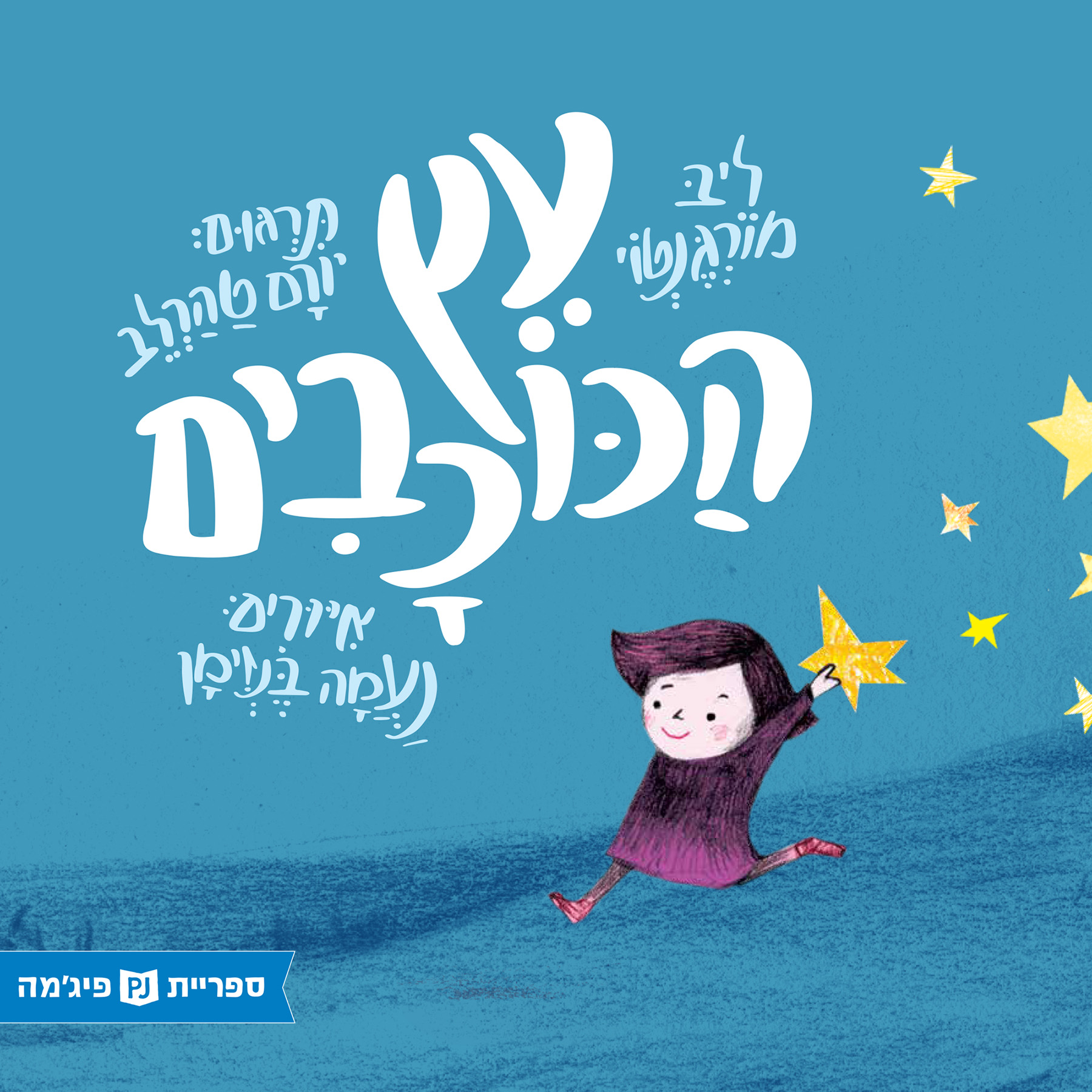 The Tree of Stars
The Tree of Stars 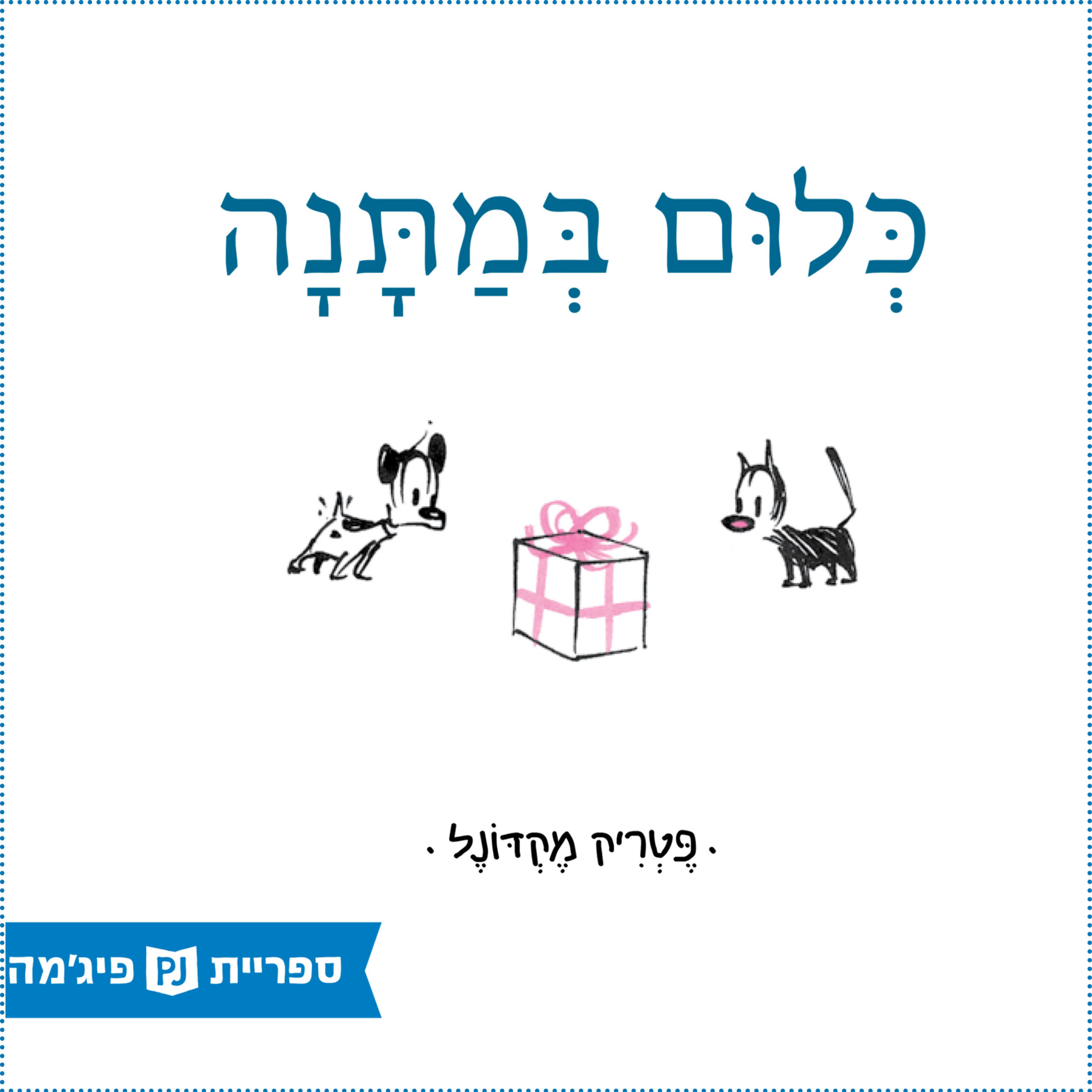 The Gift of Nothing
The Gift of Nothing 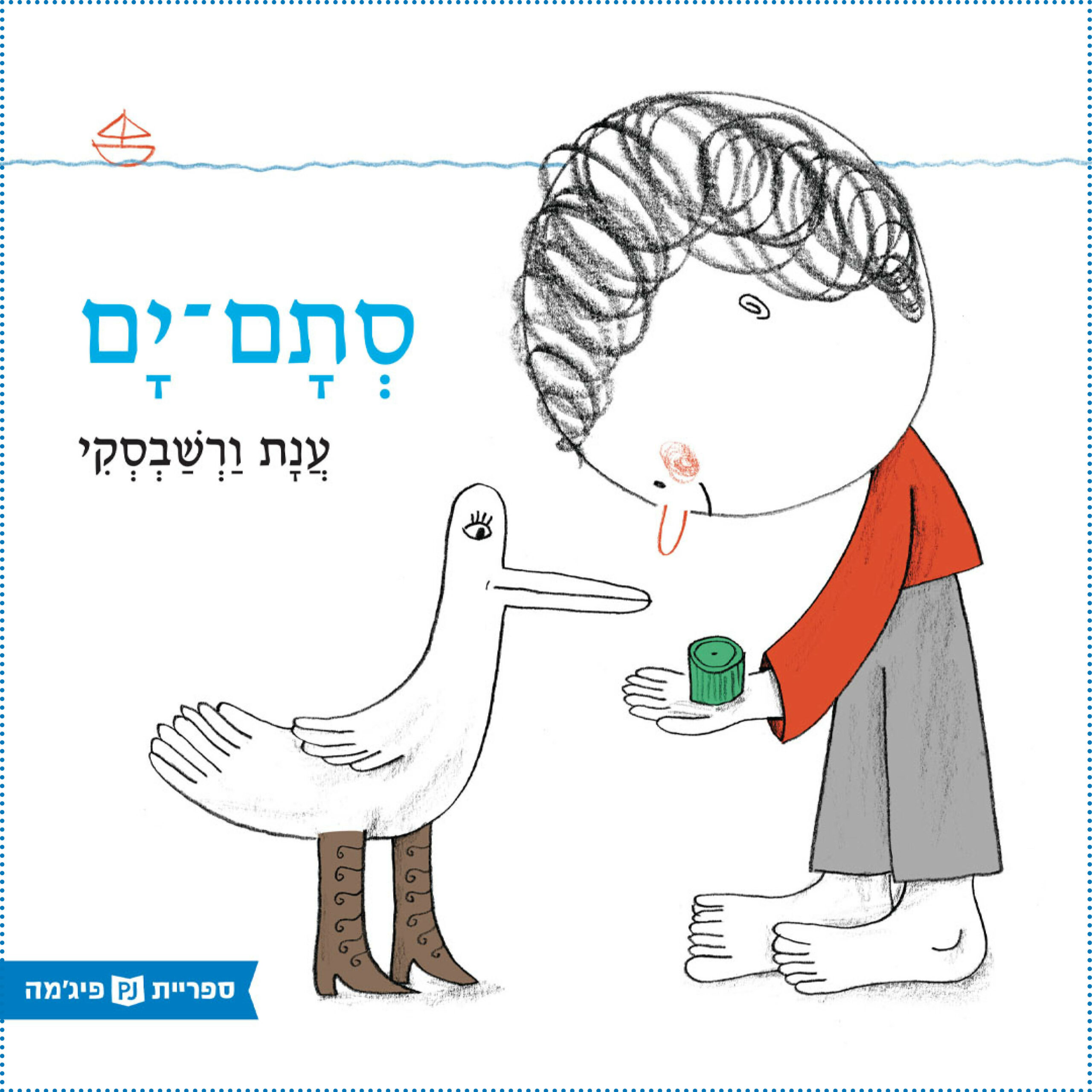 Just the Sea
Just the Sea 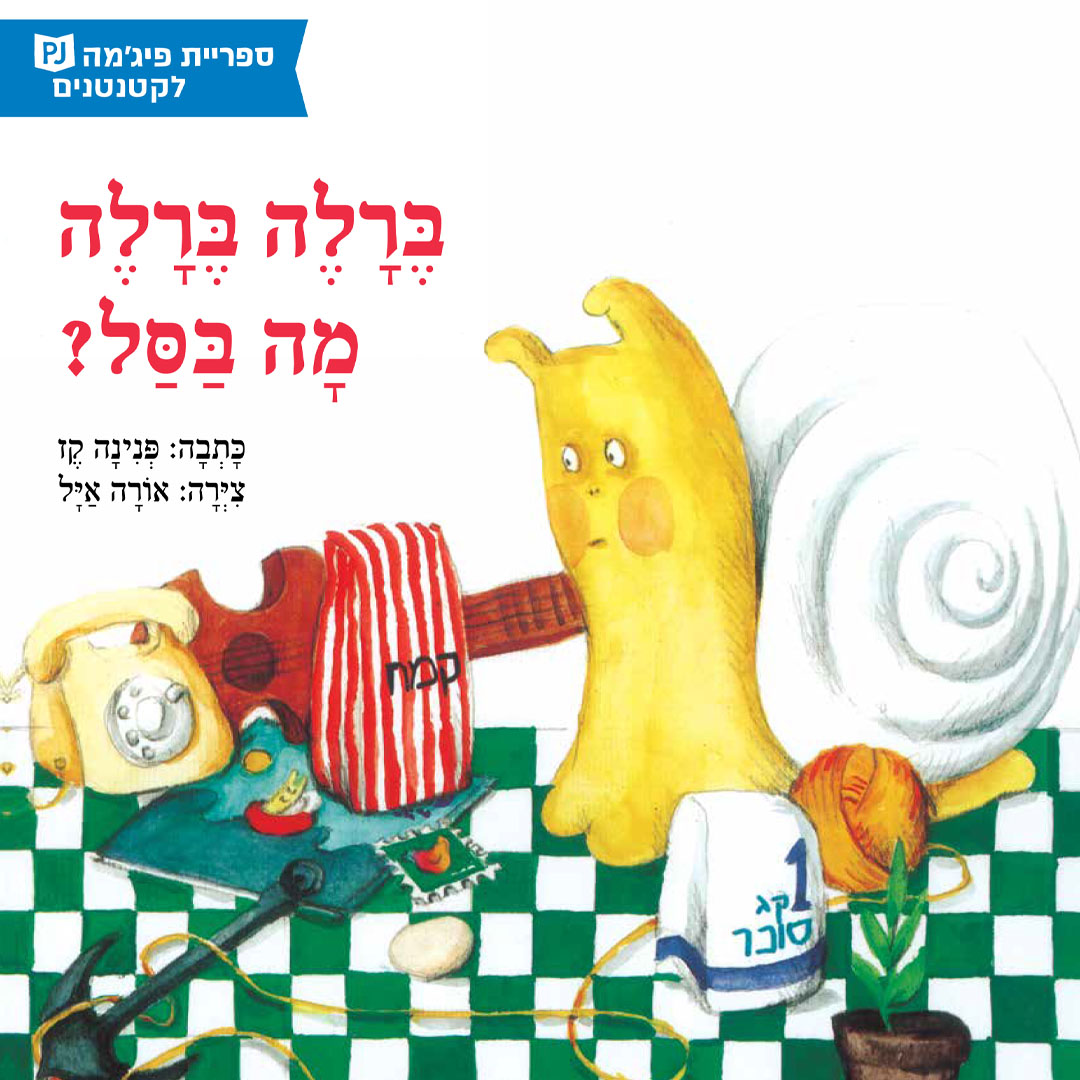 Berale Berale What’s in the Basket?
Berale Berale What’s in the Basket? 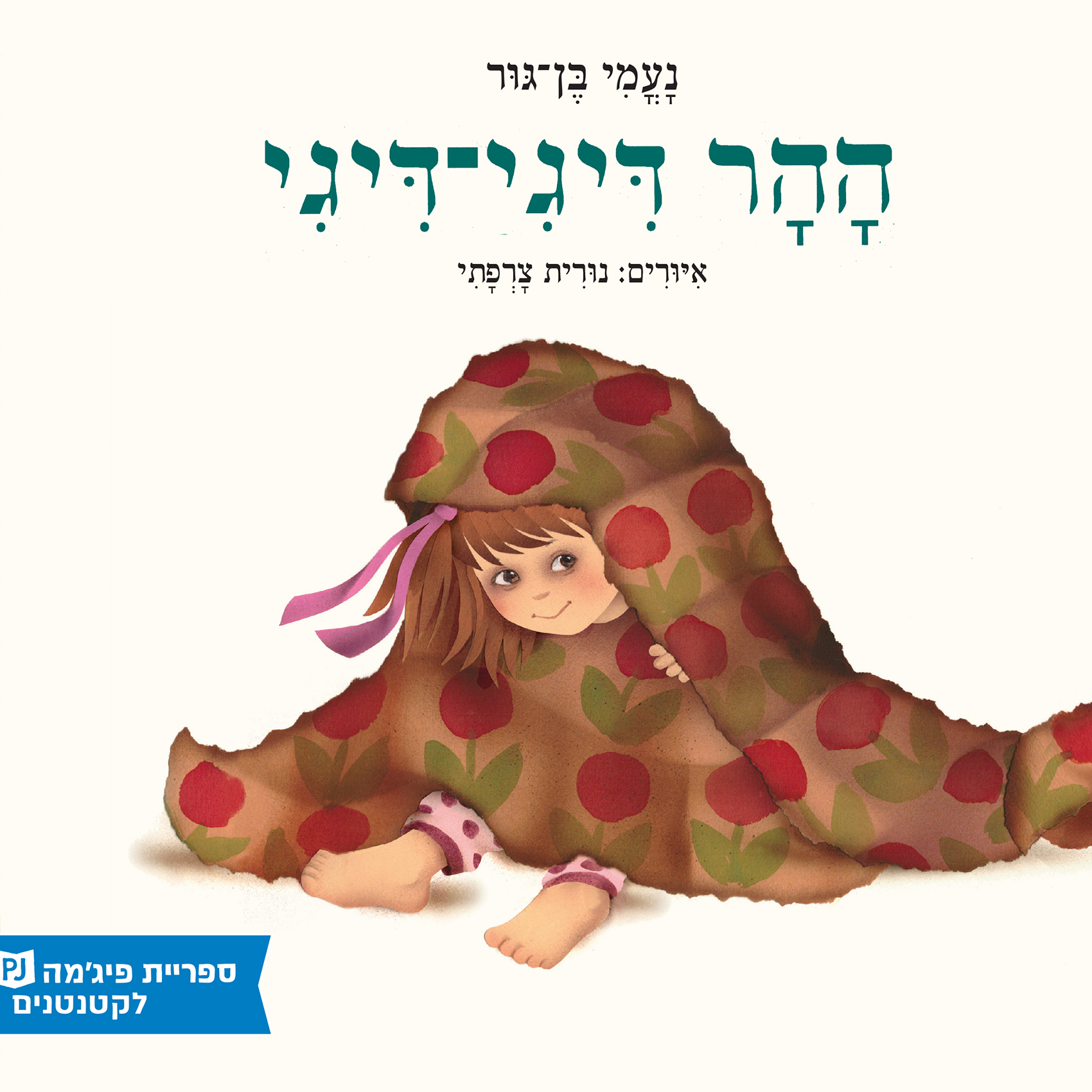 The Hill Tickle-Tickle
The Hill Tickle-Tickle 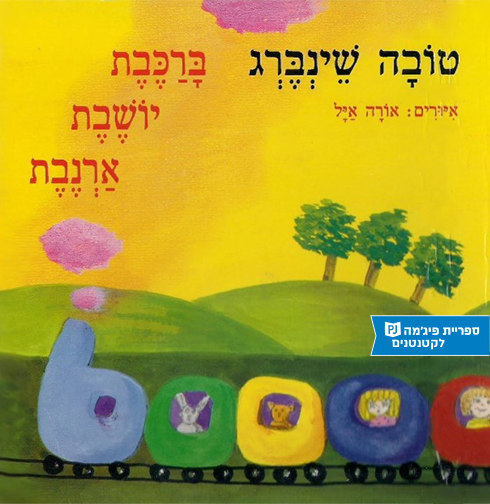 There’s A Rabbit on The Train
There’s A Rabbit on The Train 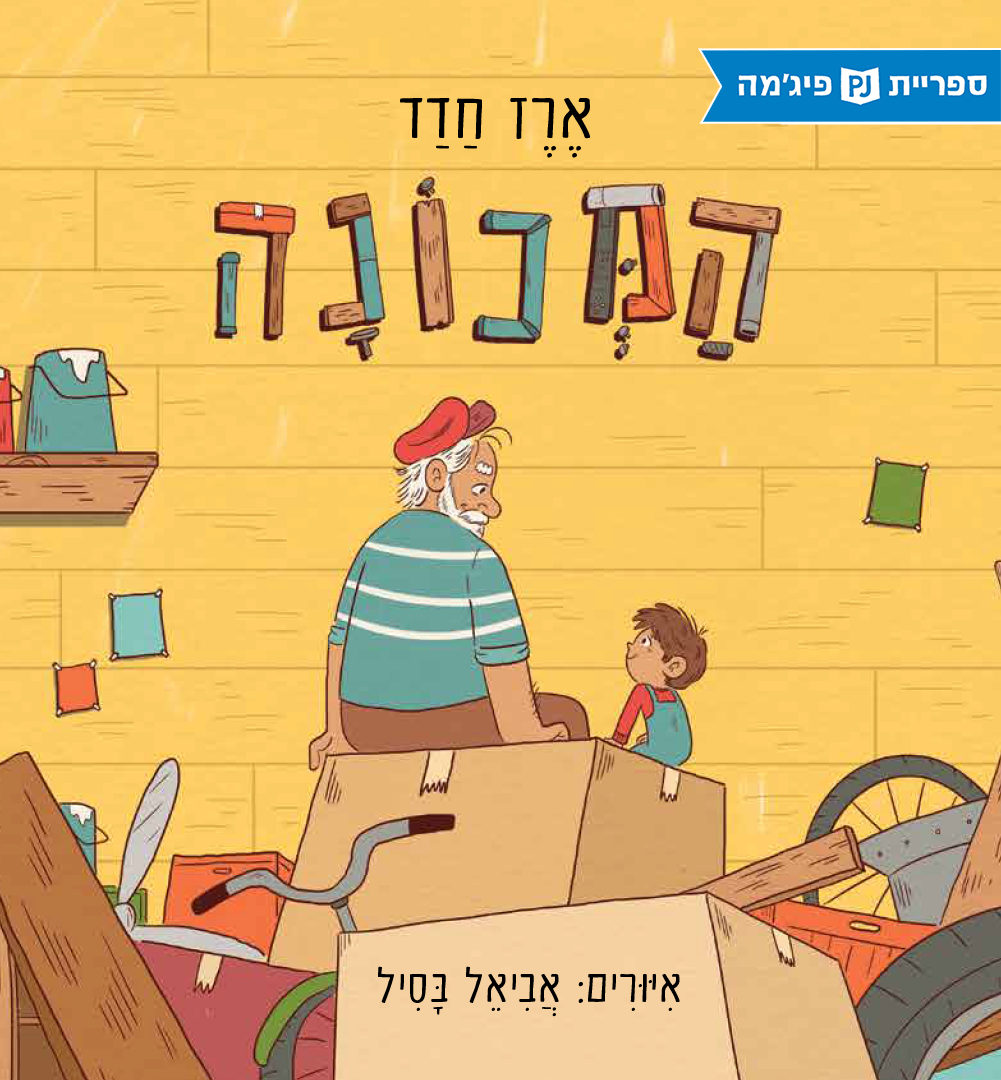 The Machine
The Machine 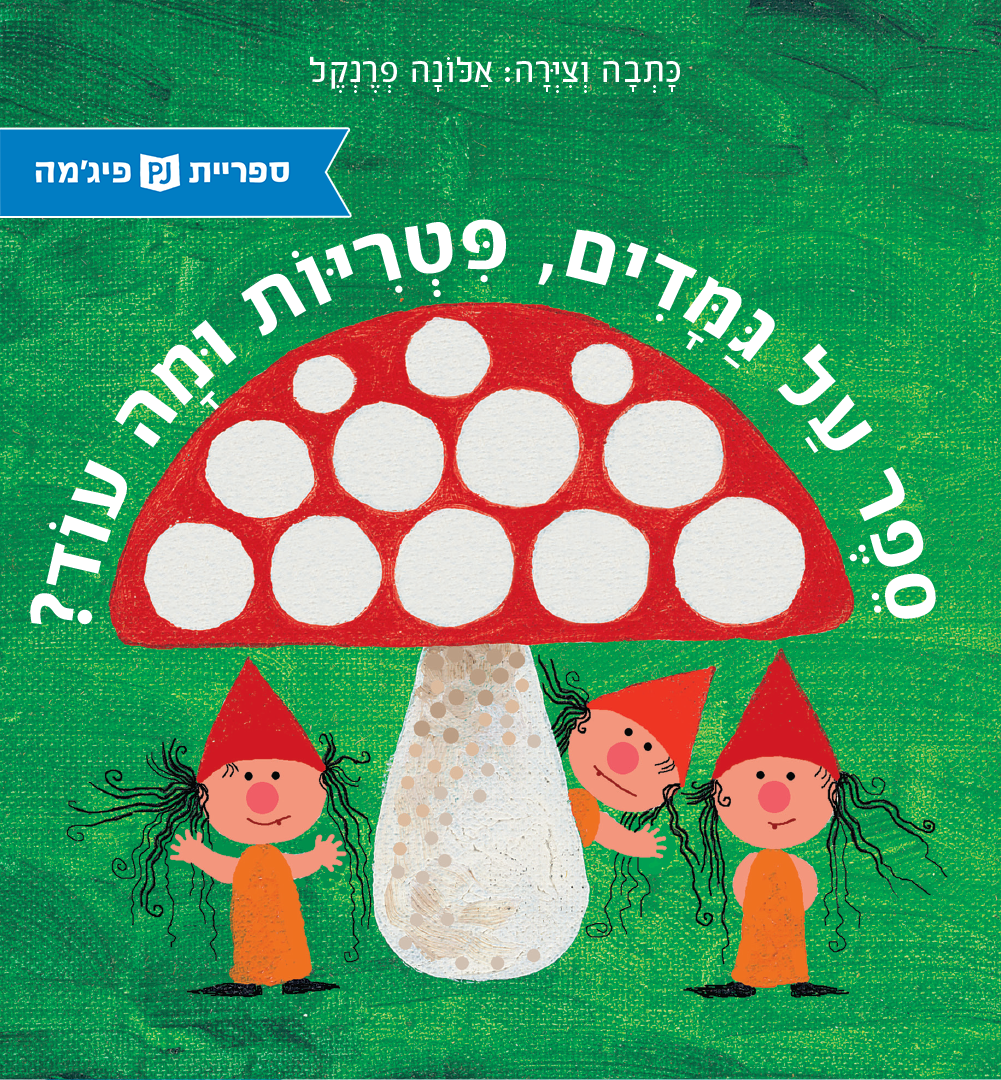 One, Two, Three, What Can a Mushroom Be?
One, Two, Three, What Can a Mushroom Be? 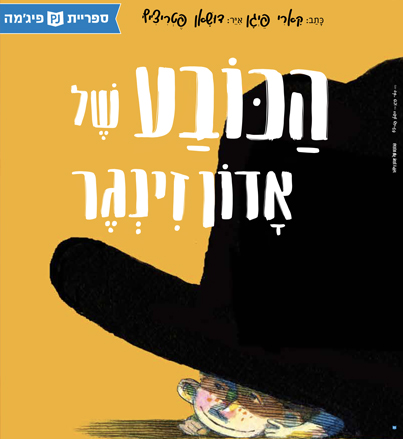 Mr. Zinger’s Hat
Mr. Zinger’s Hat 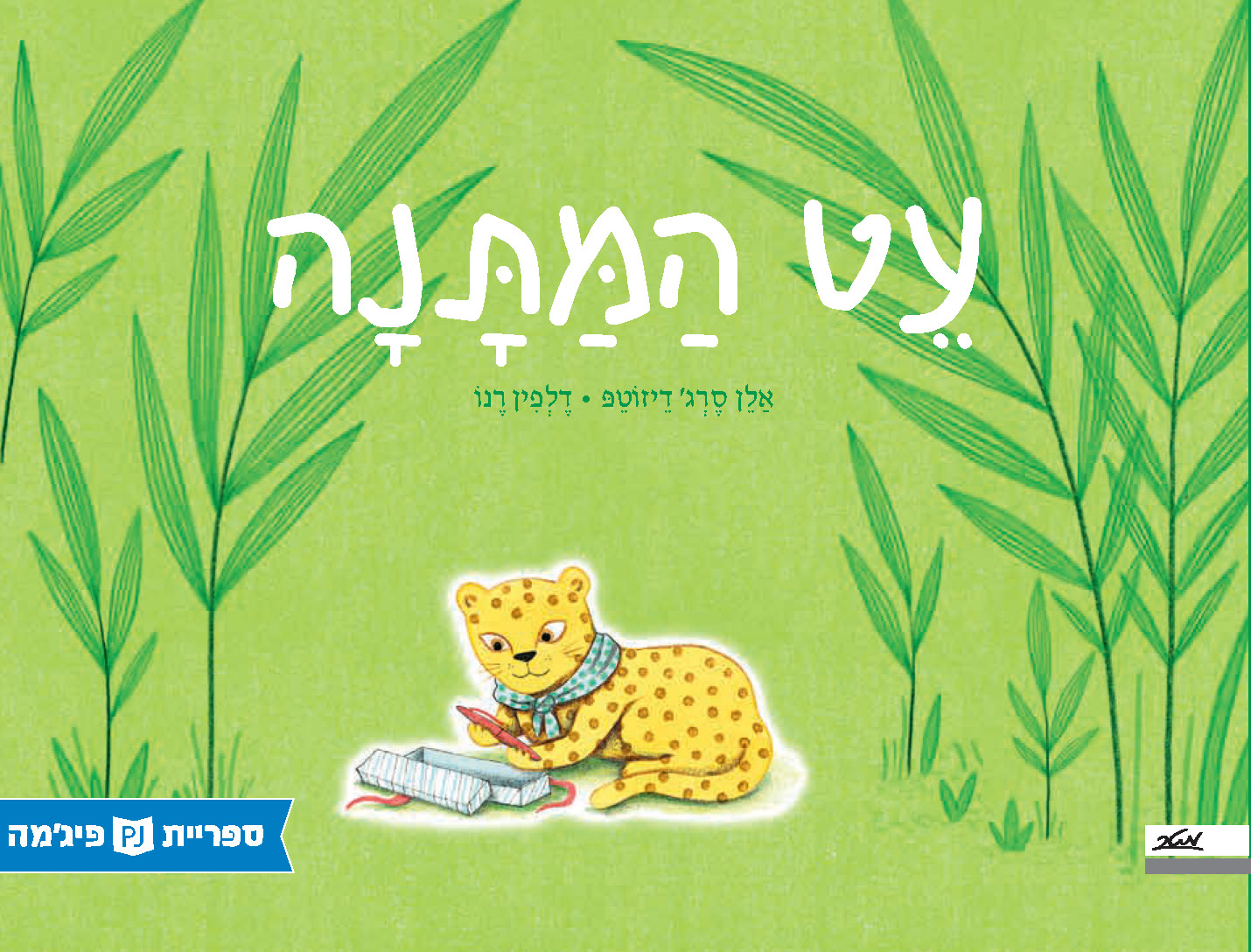 Le Cadeau (The Gift)
Le Cadeau (The Gift) 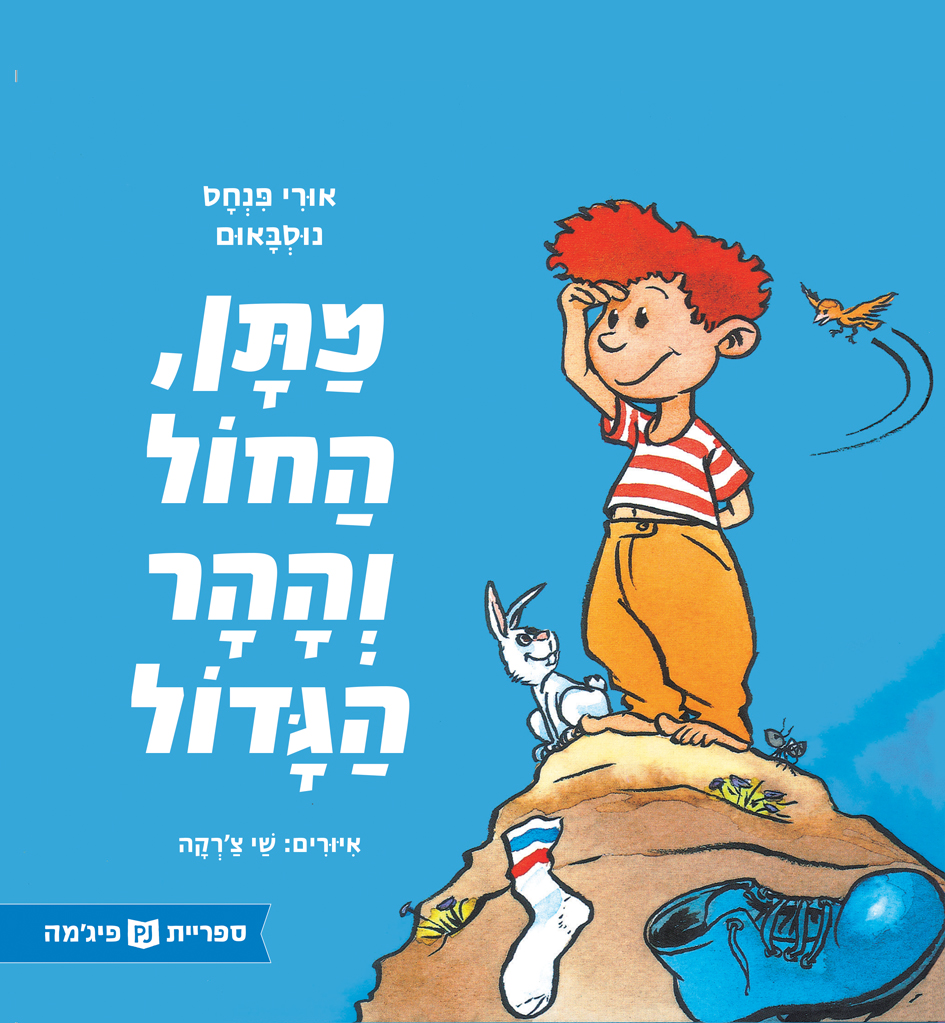 Matan and the Great Sand Mountain
Matan and the Great Sand Mountain 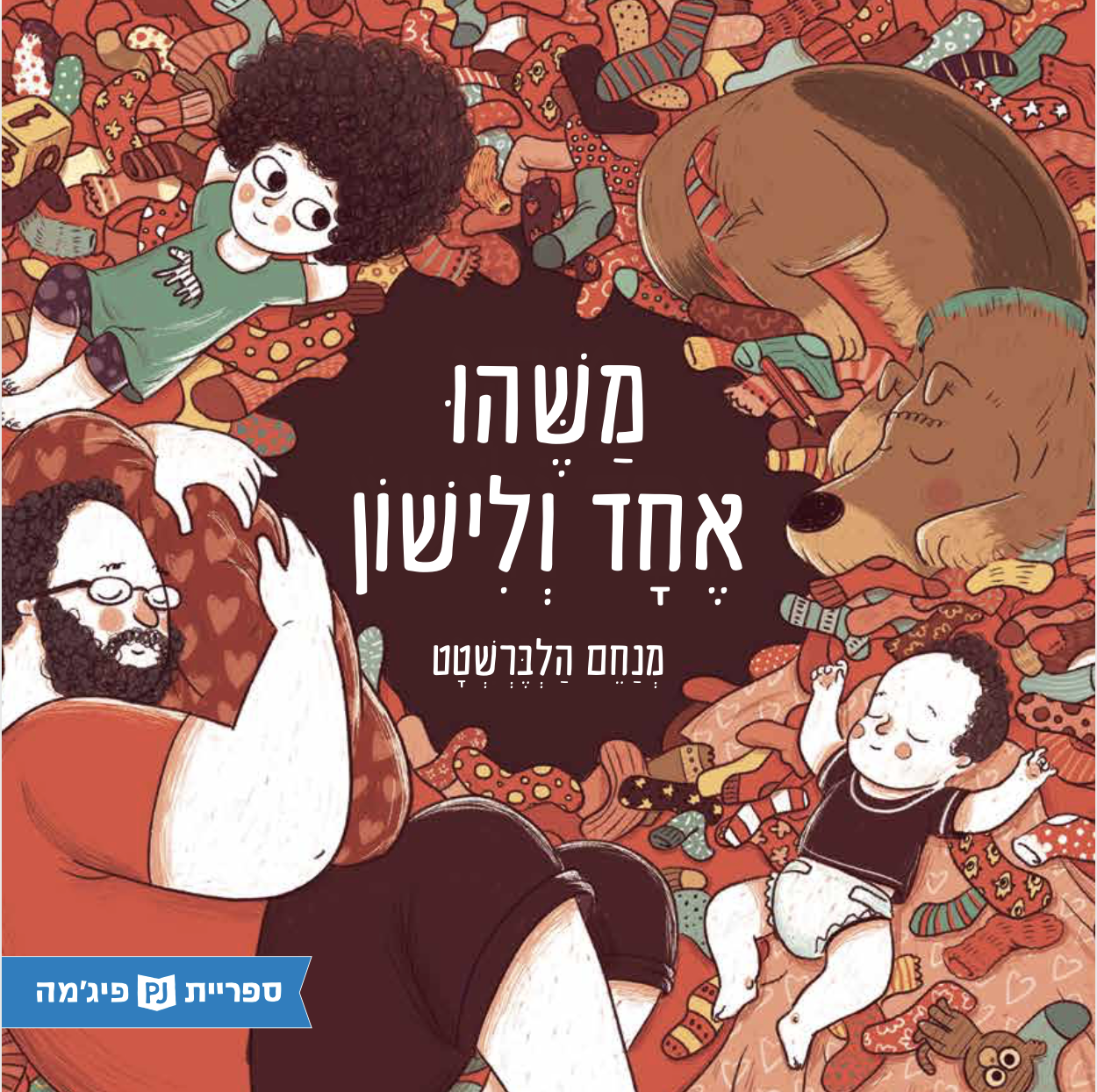 One Last Thing before Bed
One Last Thing before Bed 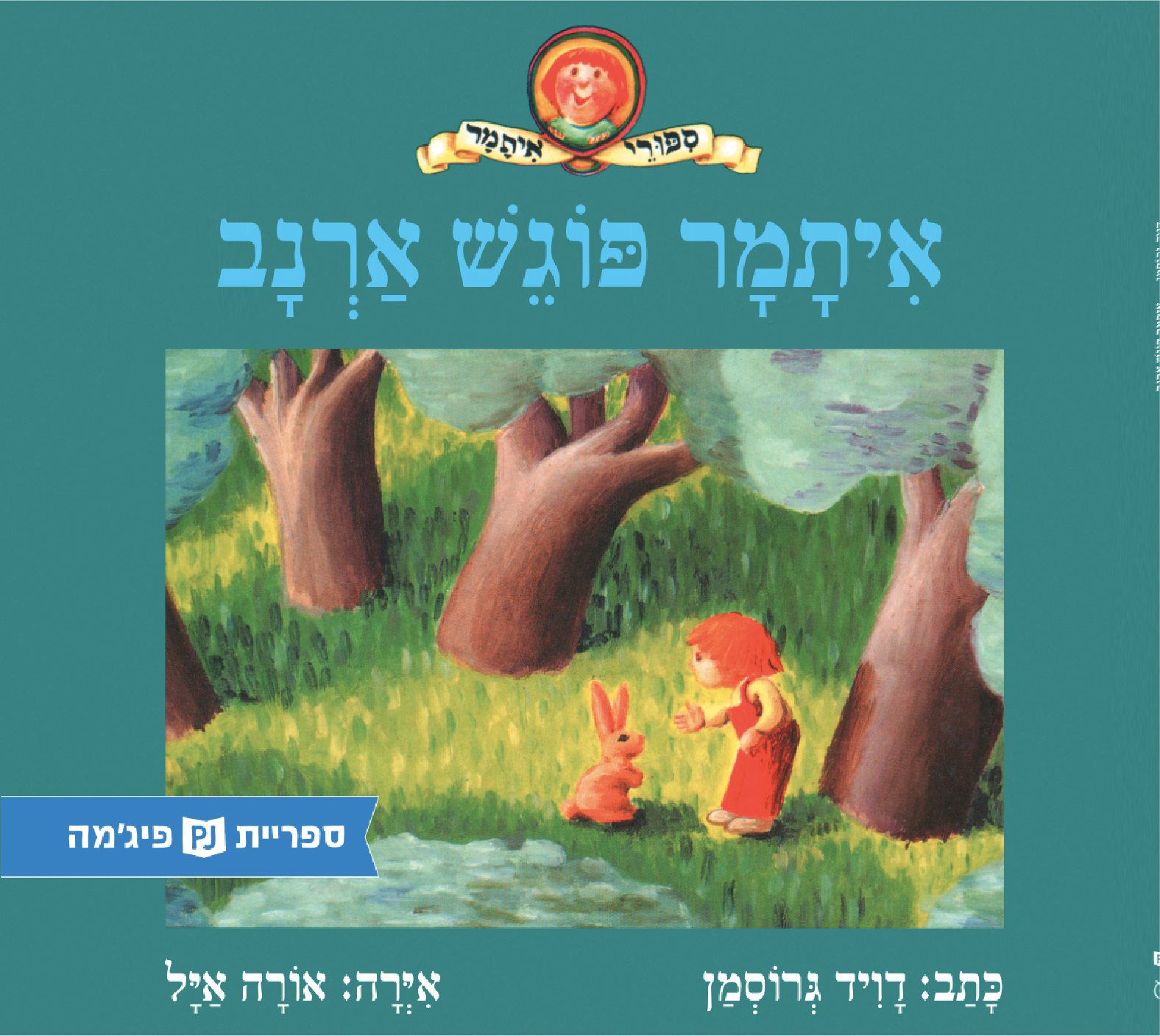 Itamar Meets a Rabbit
Itamar Meets a Rabbit 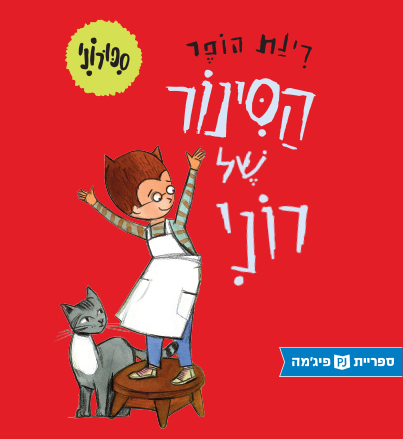 Ronnie’s Stories: Ronnie’s Apron
Ronnie’s Stories: Ronnie’s Apron 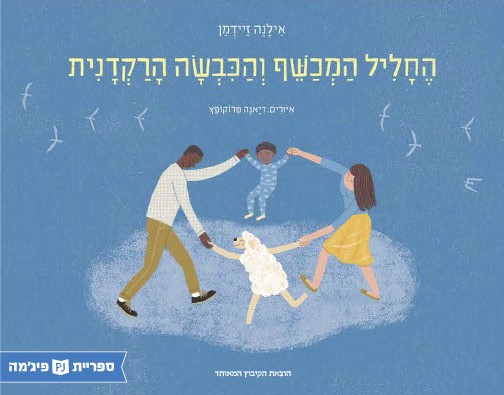 The Magic Flute and the Dancing Sheep
The Magic Flute and the Dancing Sheep 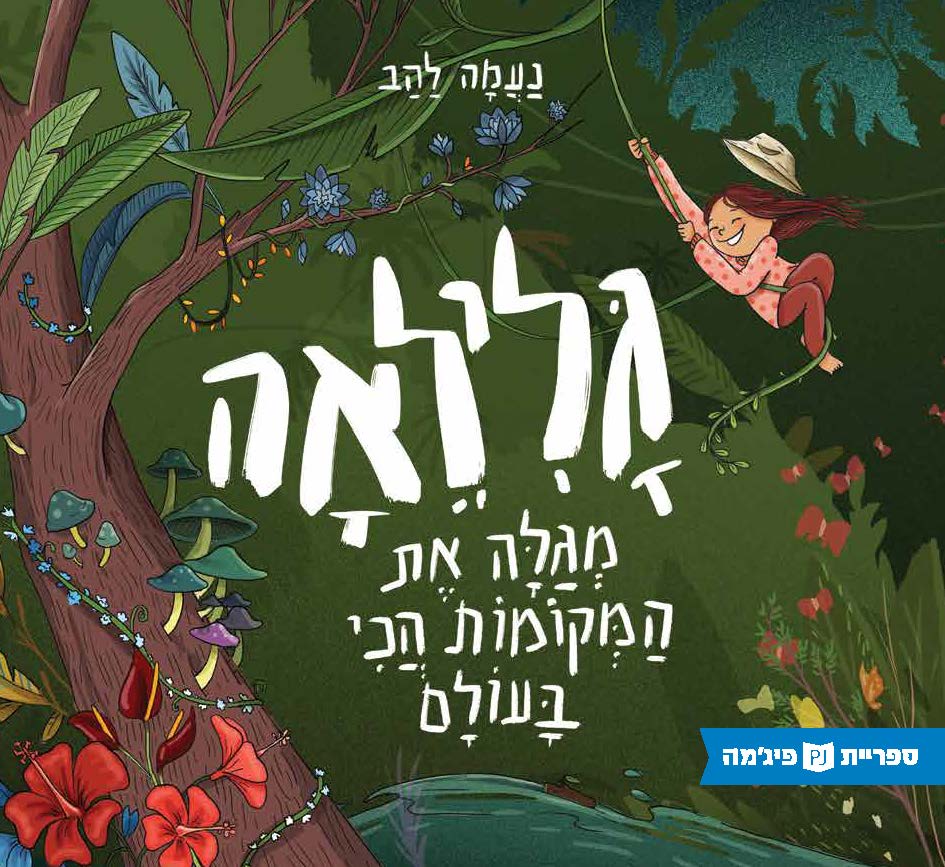 Galilea
Galilea 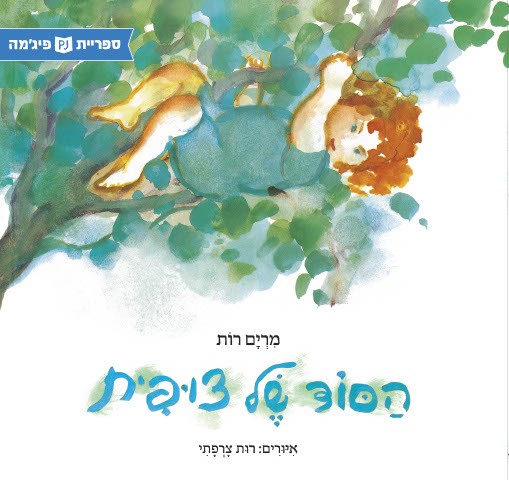 Robin’s Secret
Robin’s Secret 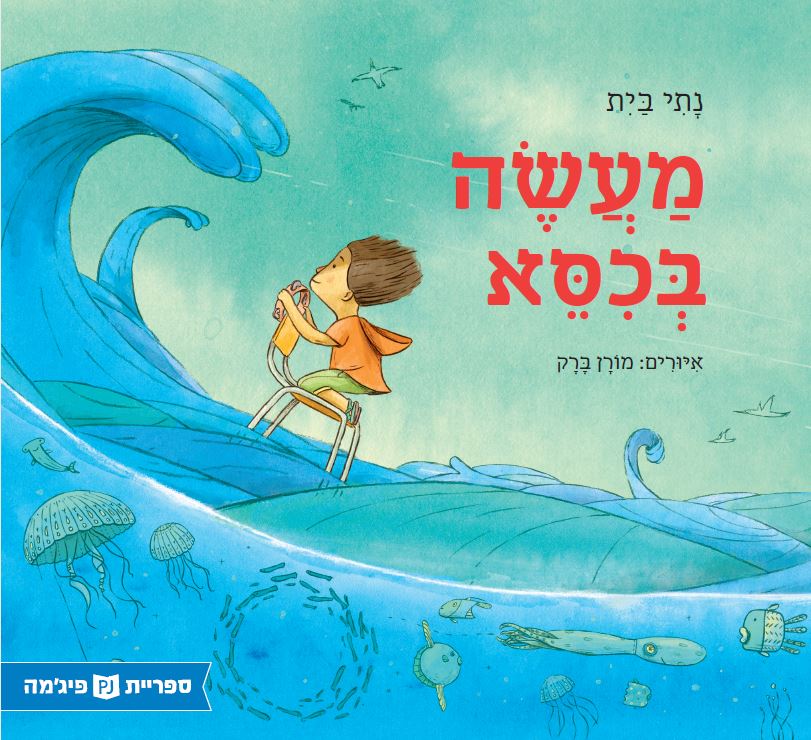 About a Chair
About a Chair 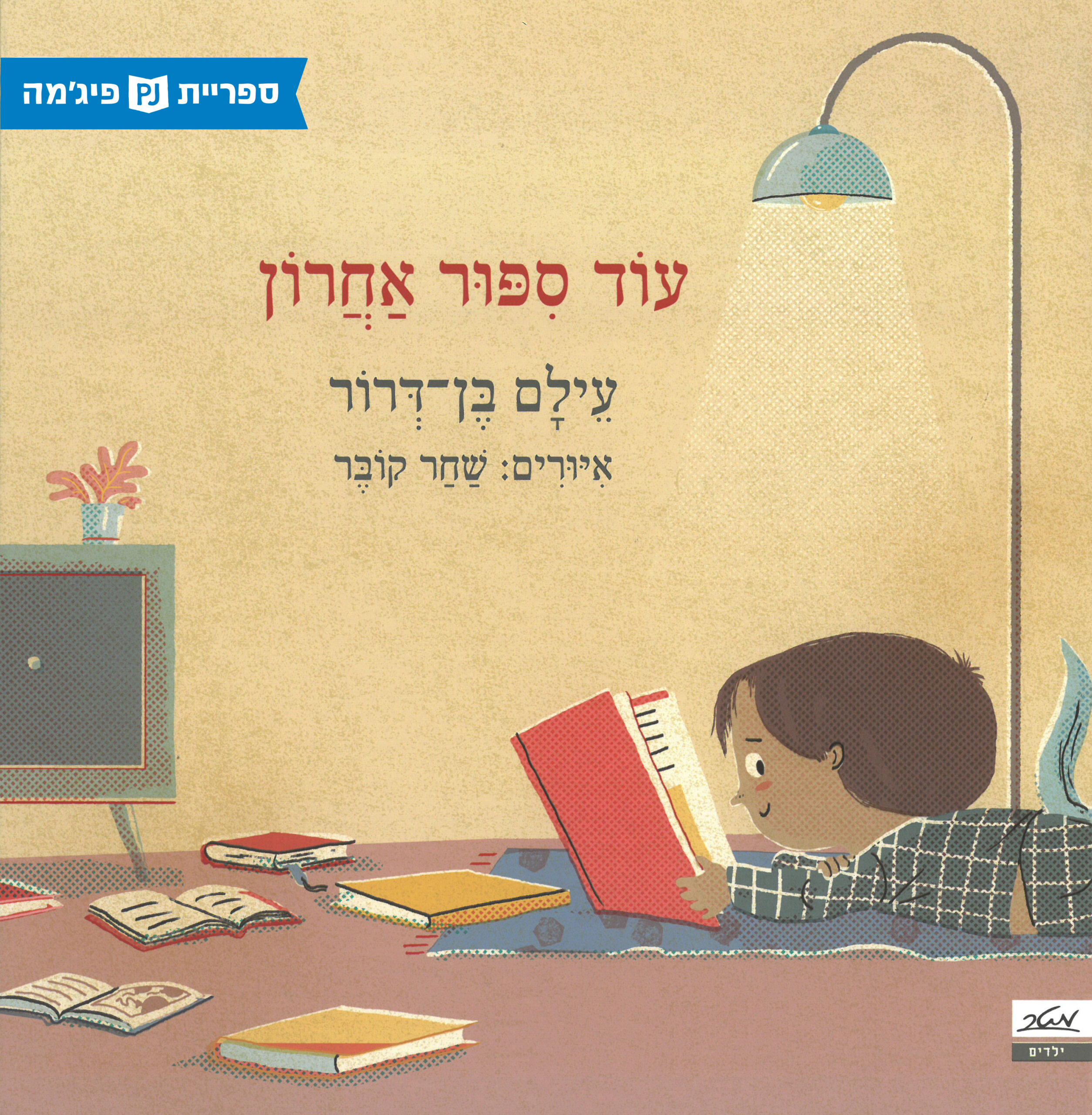 One Last Story
One Last Story 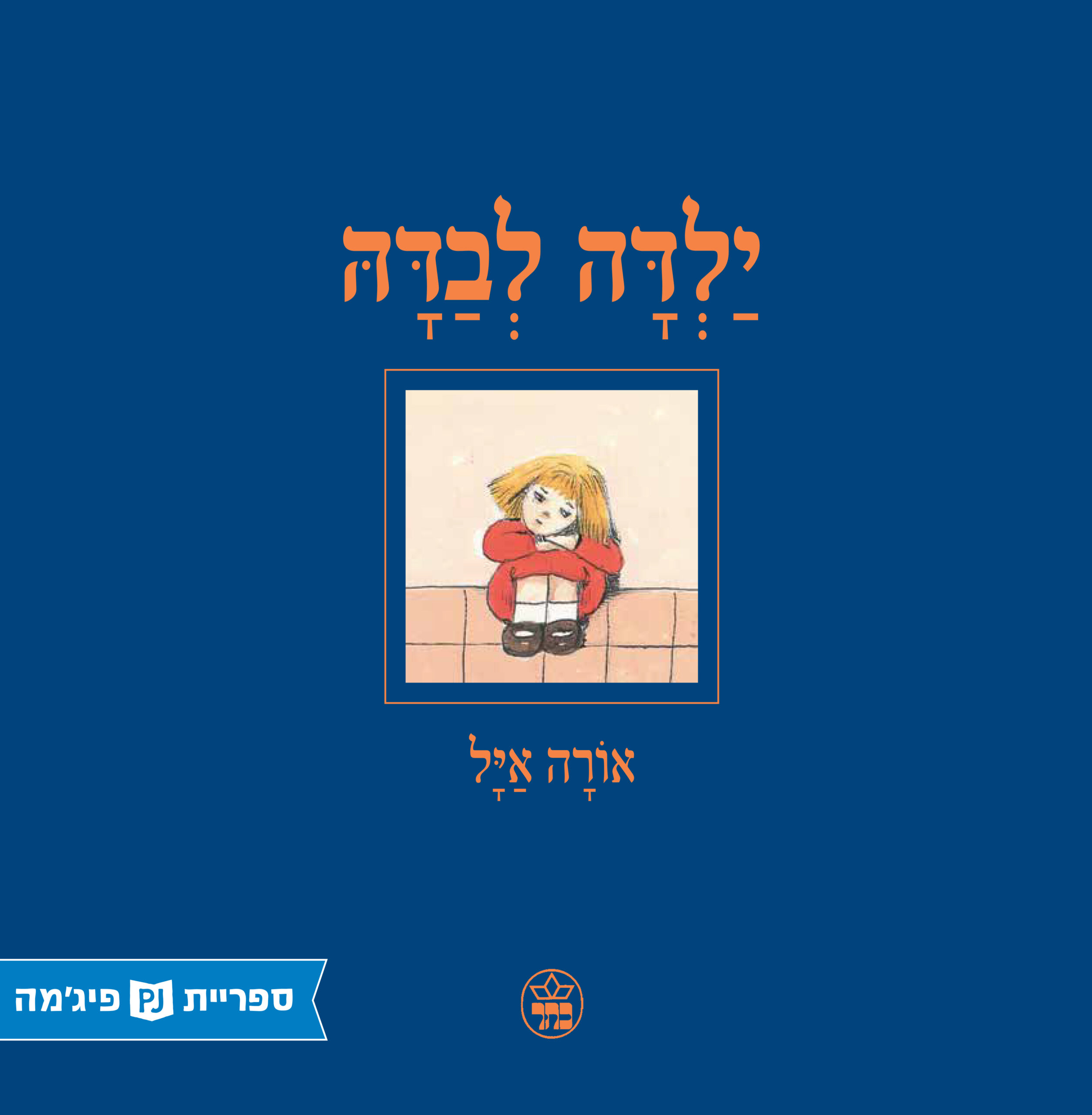 A Girl all by Herself
A Girl all by Herself 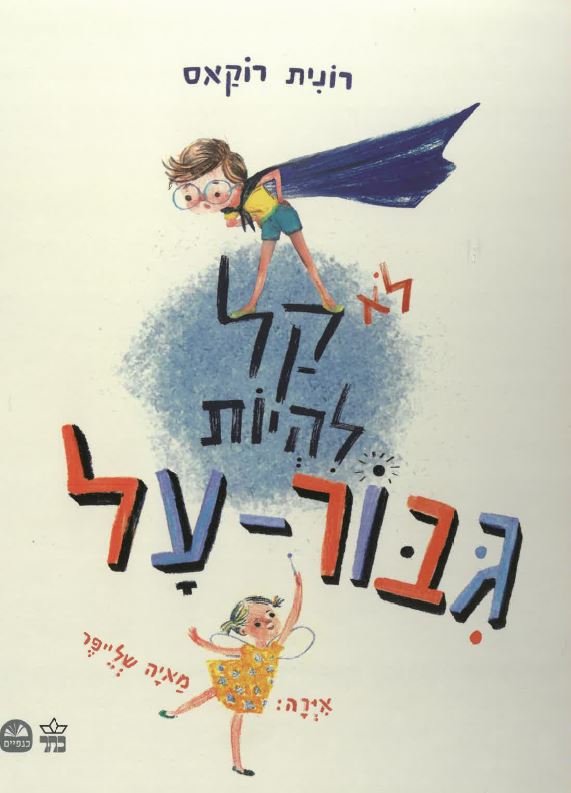 It’s not Easy to be a Super Hero
It’s not Easy to be a Super Hero 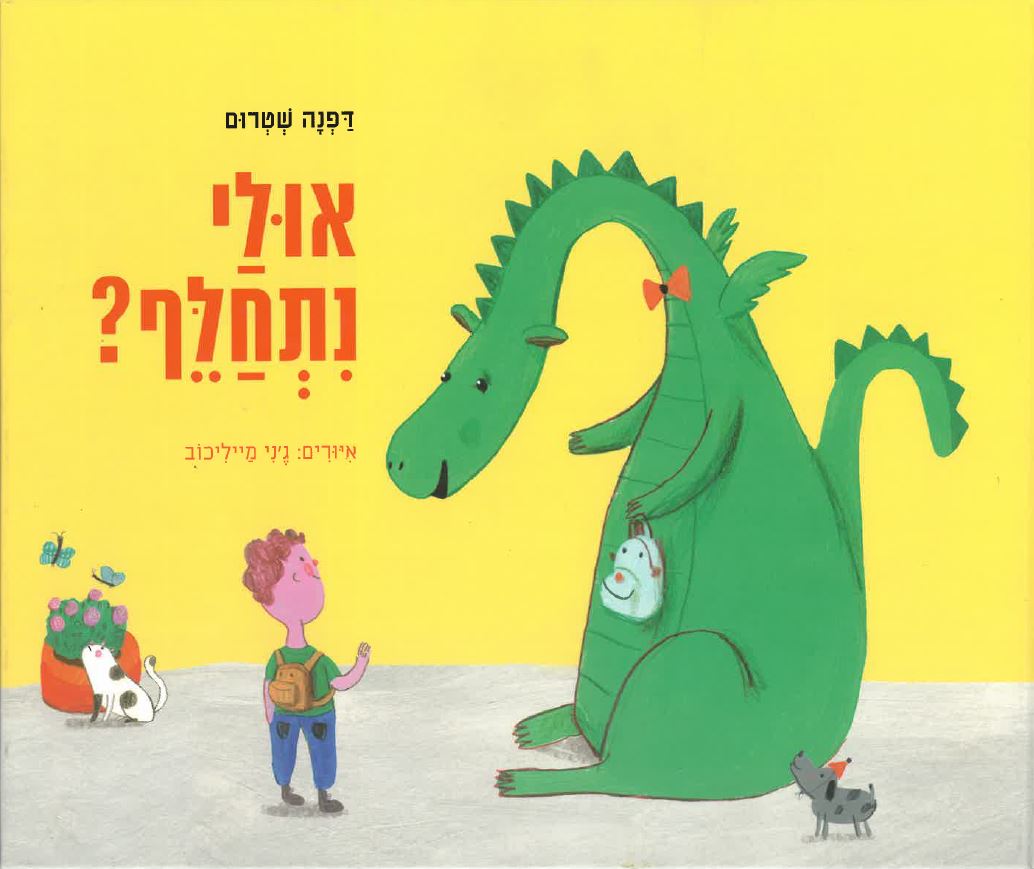 How about Changing Places?
How about Changing Places? 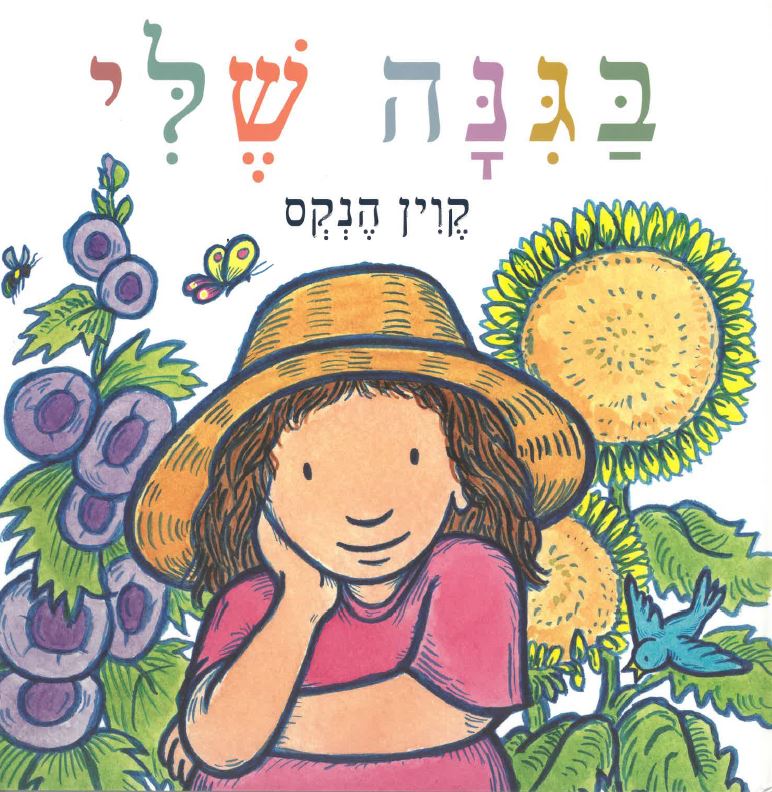 My Garden
My Garden 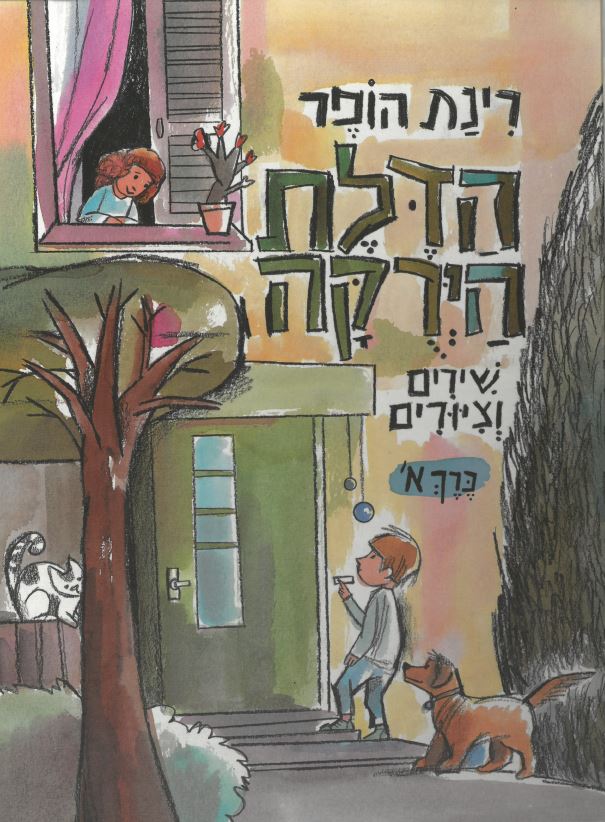 The Green Door
The Green Door 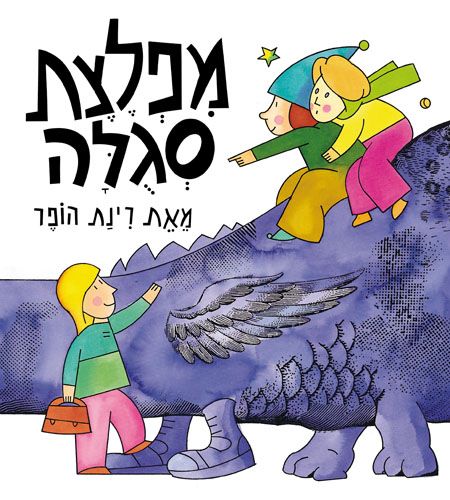 Purple Monster
Purple Monster 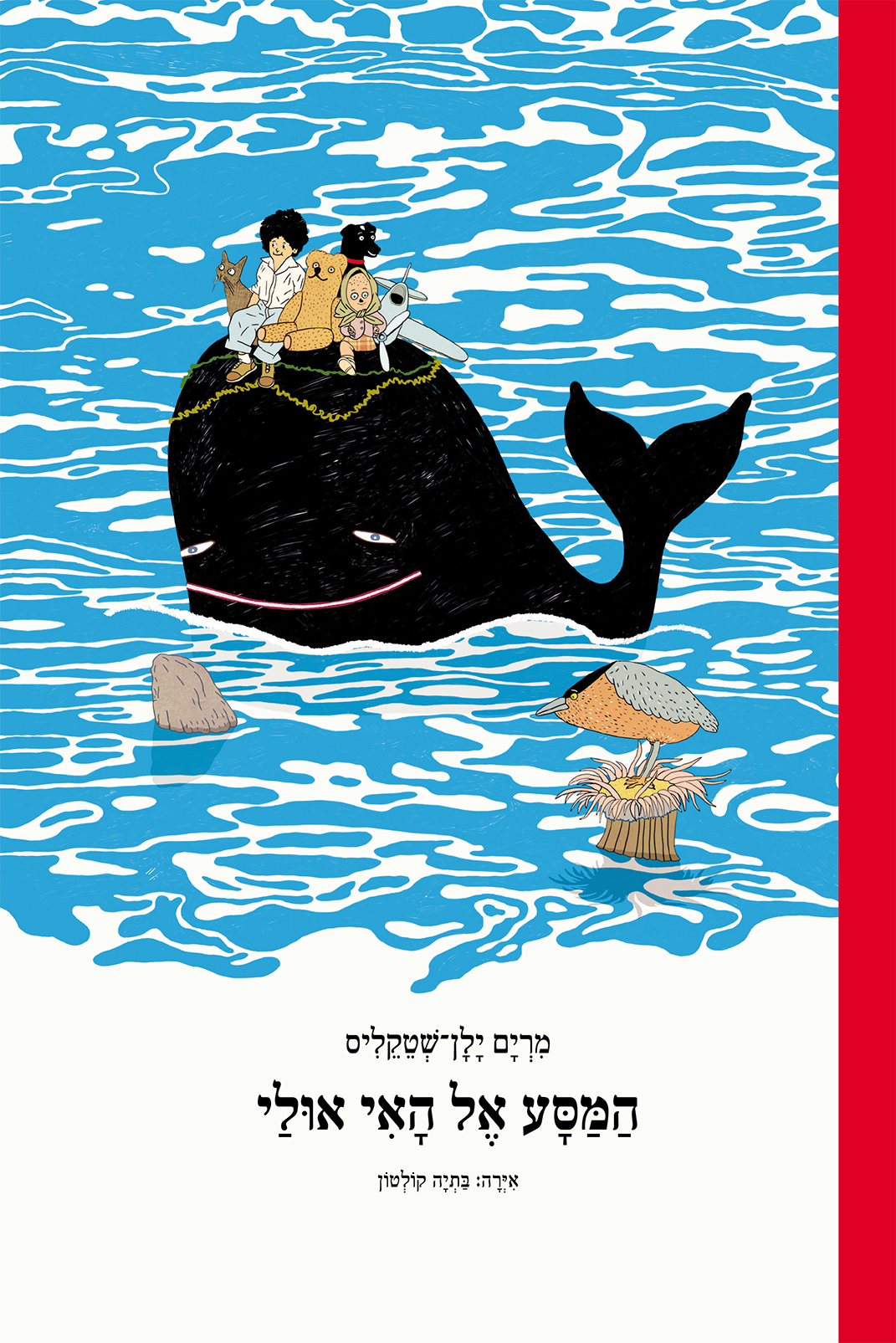 The Journey to the Island of Maybe
The Journey to the Island of Maybe 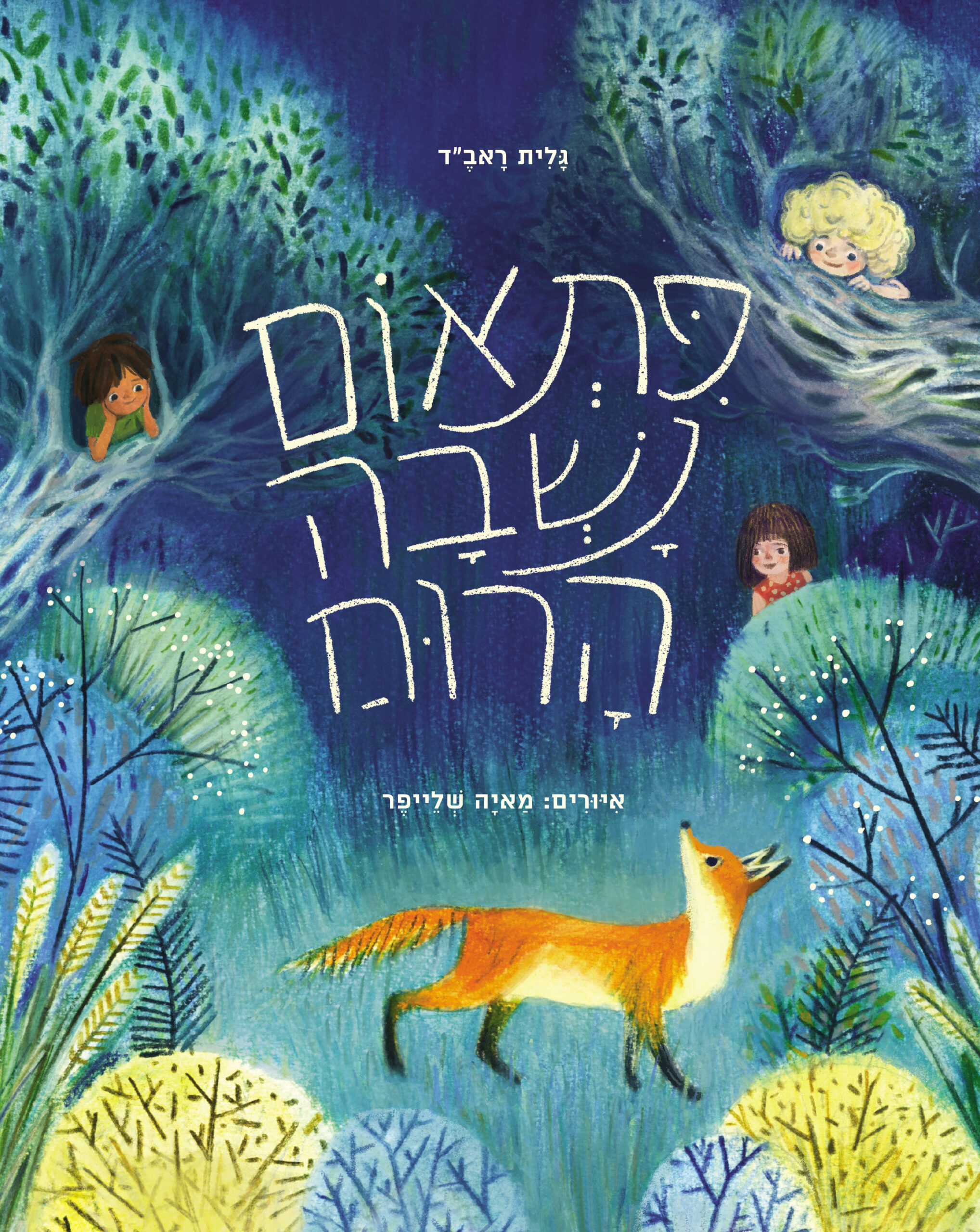 At the Heart of the Orchard
At the Heart of the Orchard 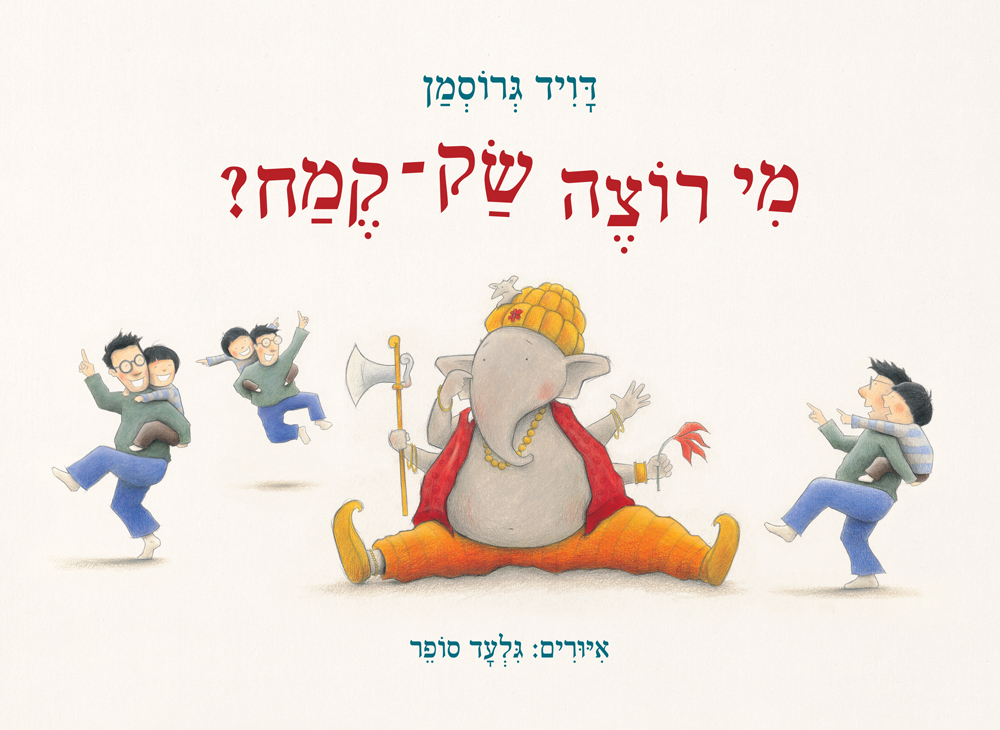 Who Wants a Piggyback?
Who Wants a Piggyback? 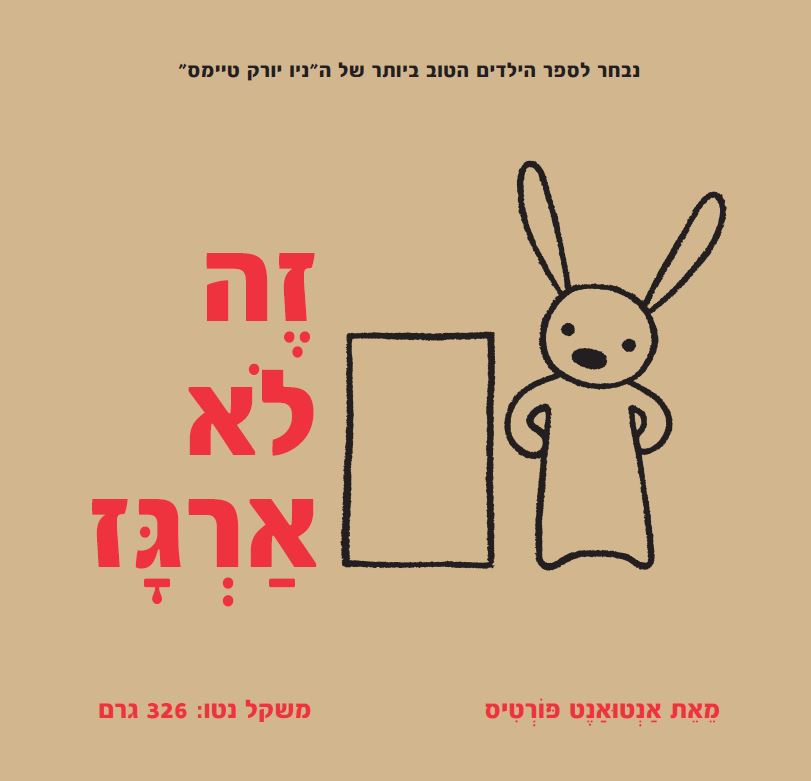 Not a Box
Not a Box 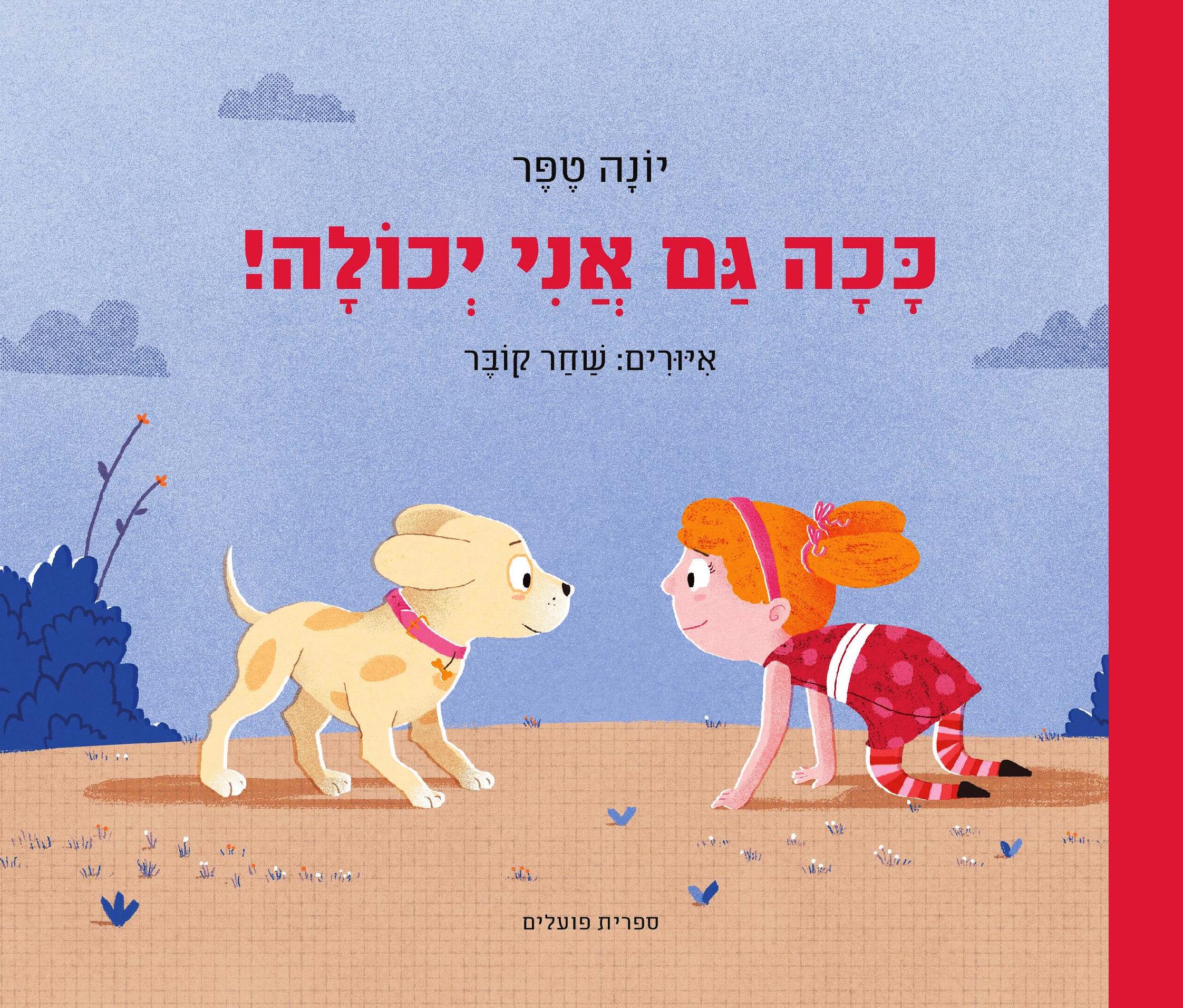 I Can do it too!
I Can do it too! 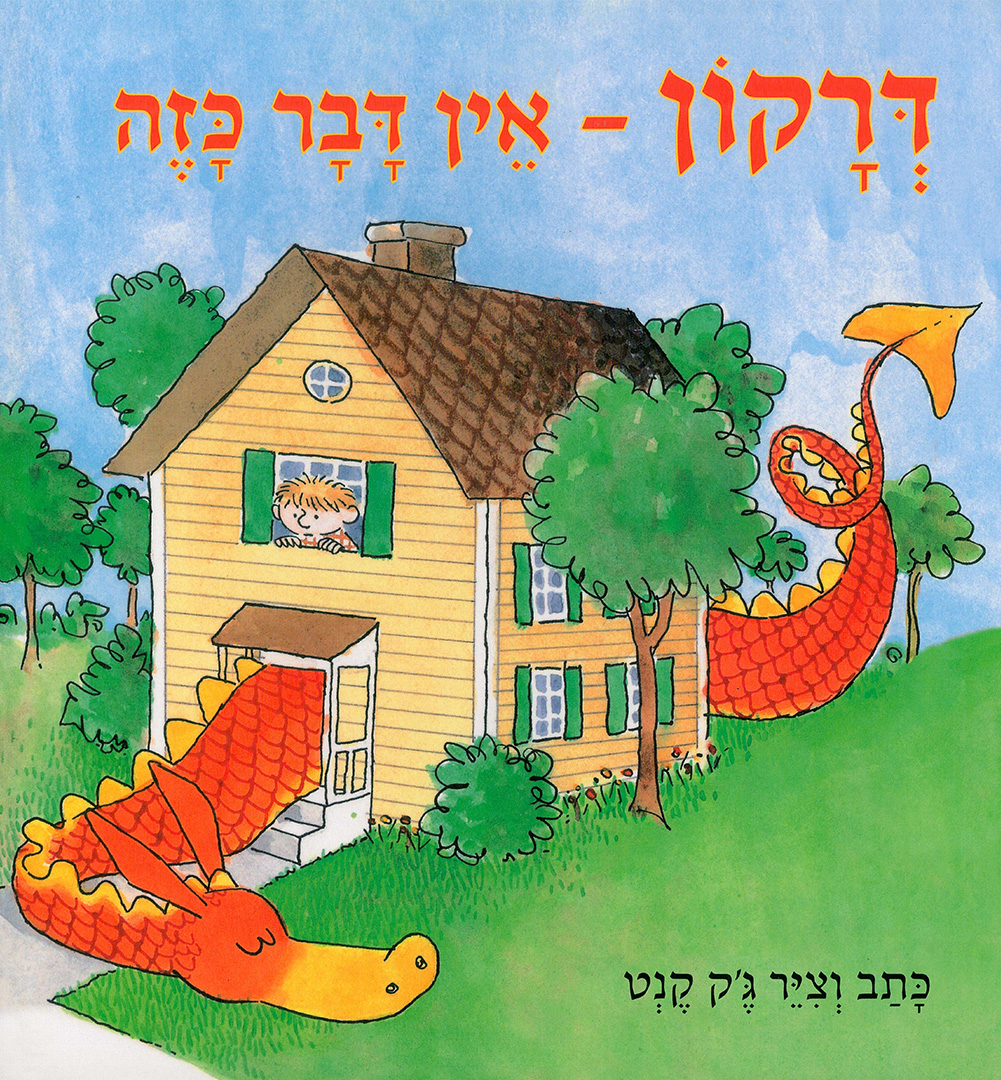 There’s No Such Thing as a Dragon
There’s No Such Thing as a Dragon 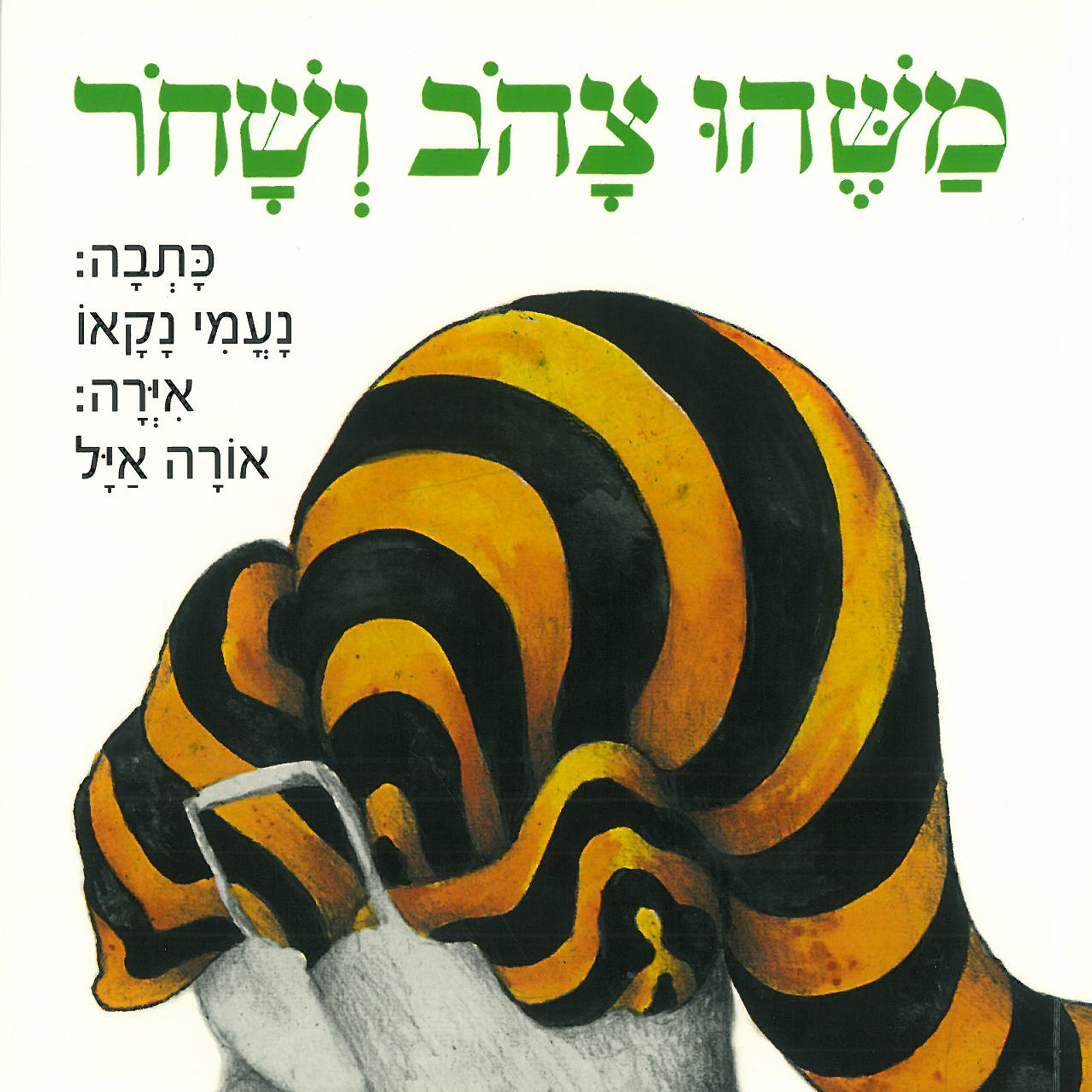 Something Yellow and Black
Something Yellow and Black 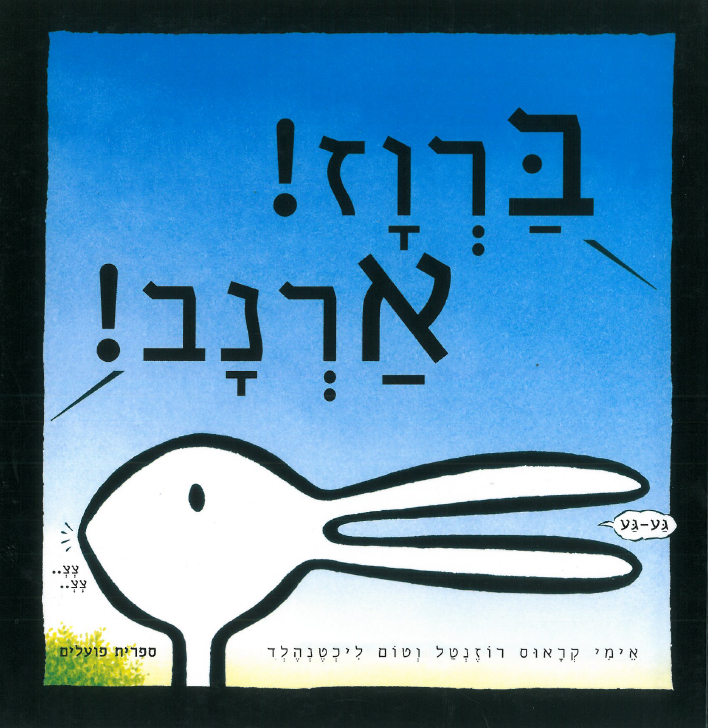 Duck! Rabbit!
Duck! Rabbit! 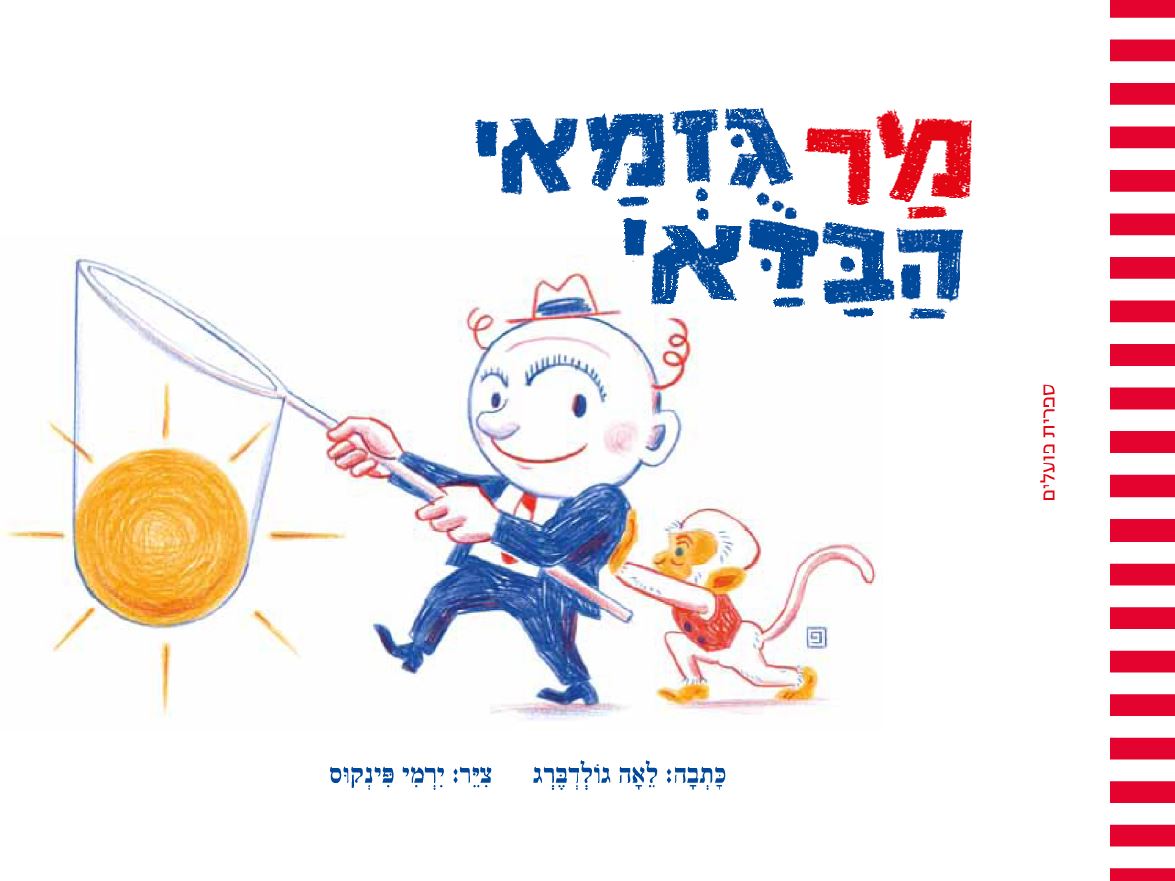 Mr. Fibber the Storyteller
Mr. Fibber the Storyteller 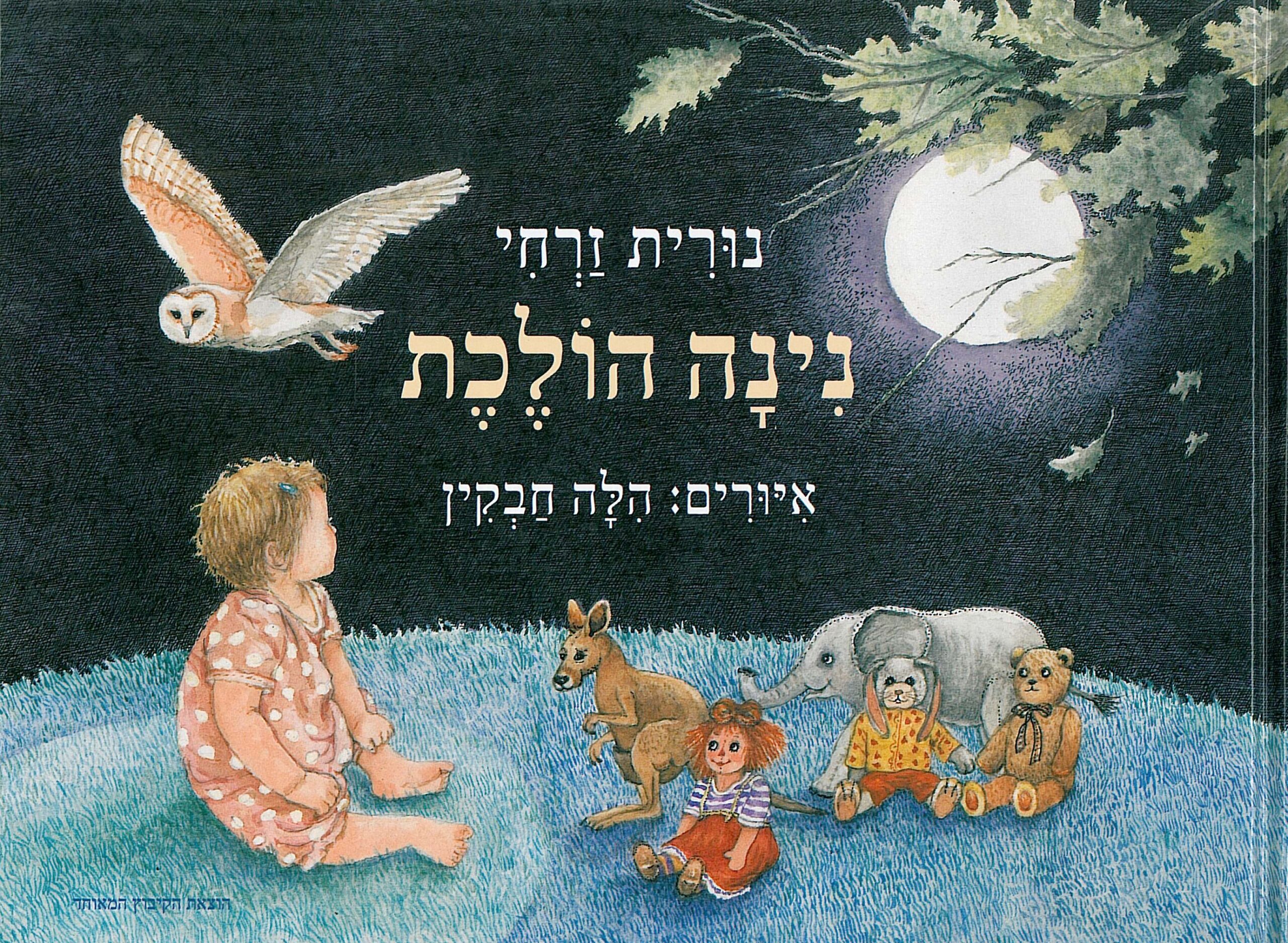 Nina Walks
Nina Walks 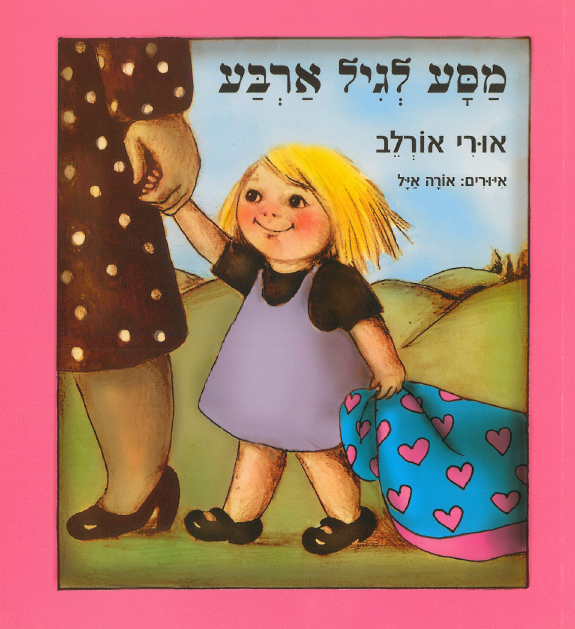 Journey to Age Four
Journey to Age Four 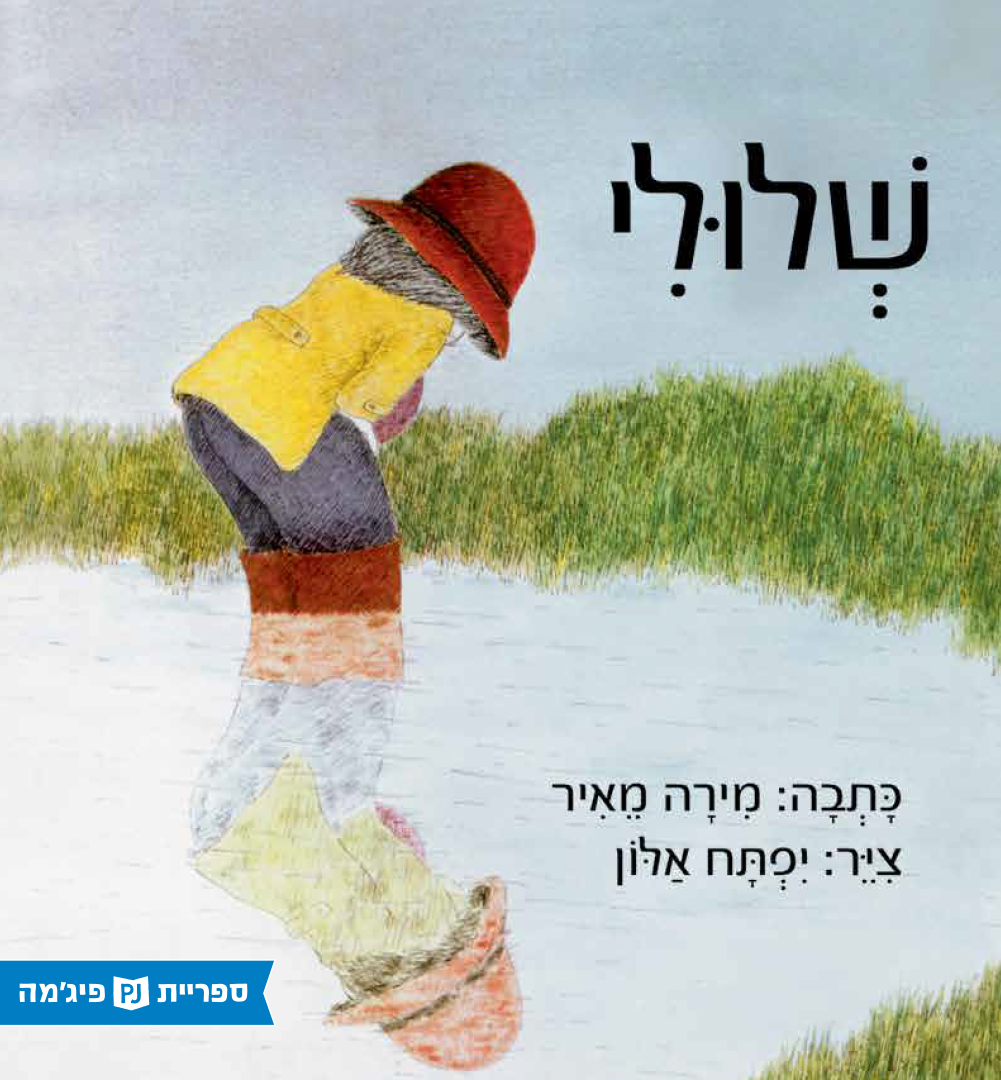 Sheluli
Sheluli 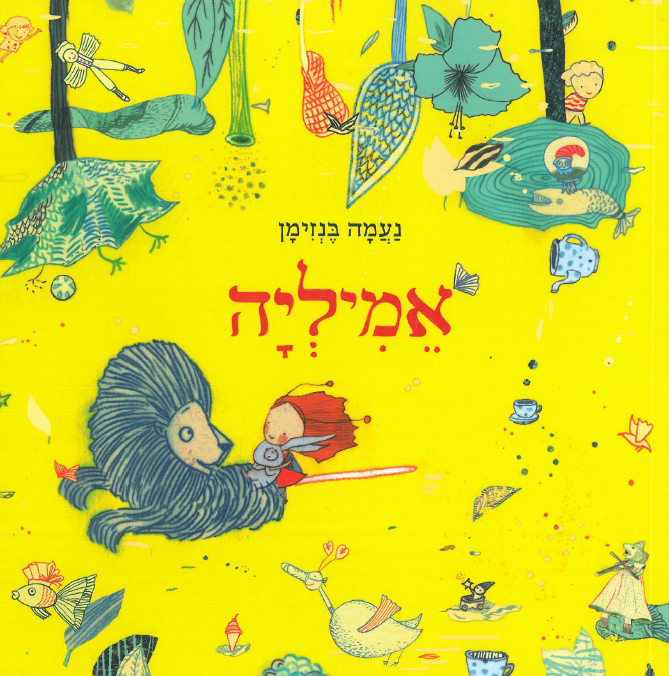 EMILIA
EMILIA 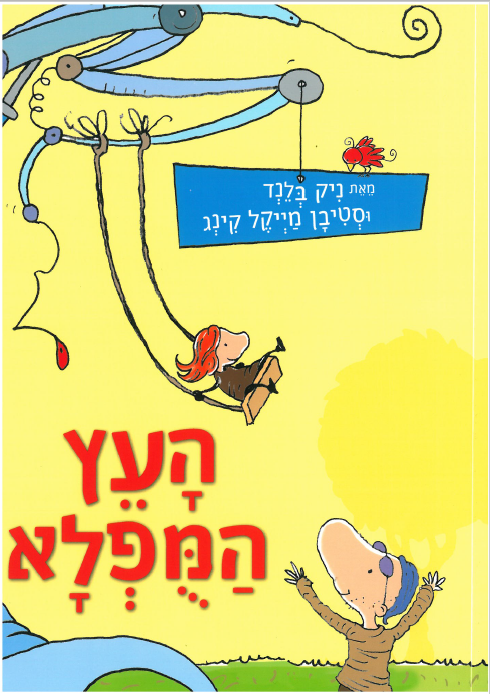 The Magnificent Tree
The Magnificent Tree 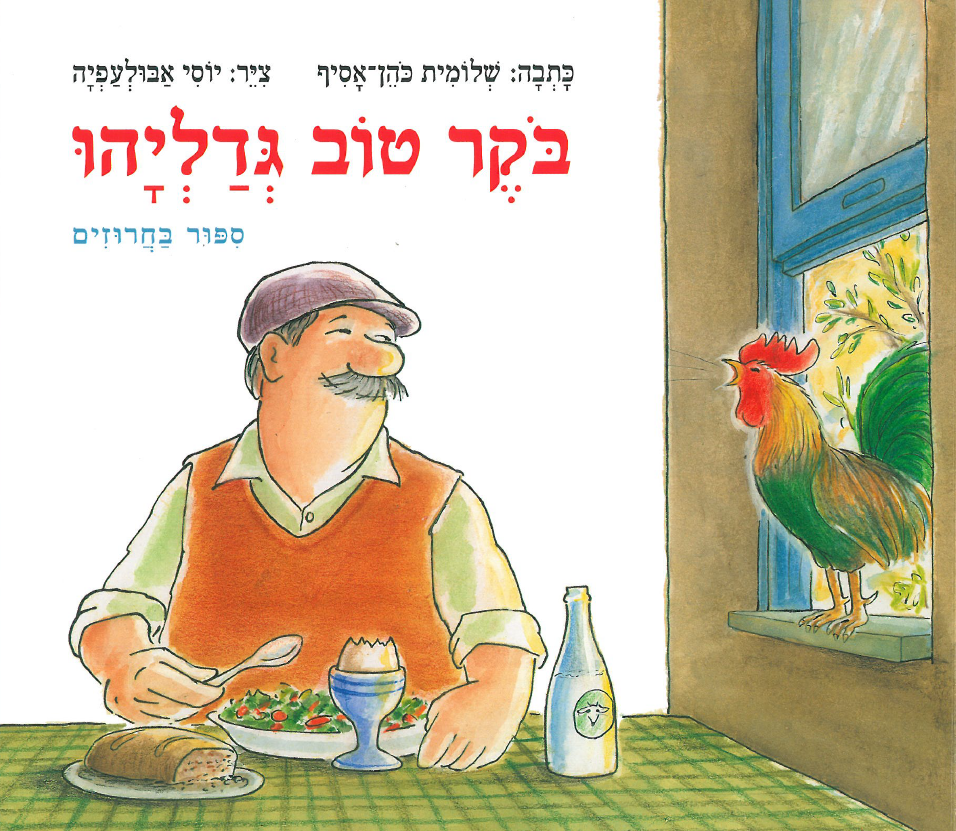 Good Morning, MrGedalyahu
Good Morning, MrGedalyahu 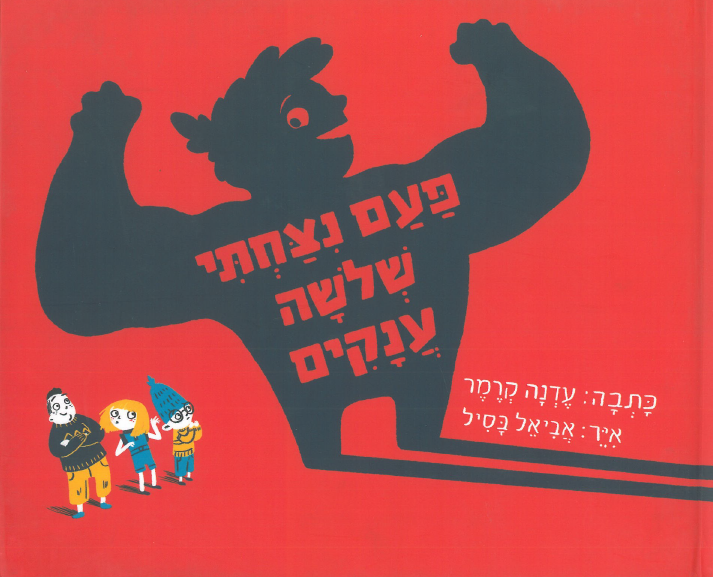 Once I Knocked Down Three Giants
Once I Knocked Down Three Giants 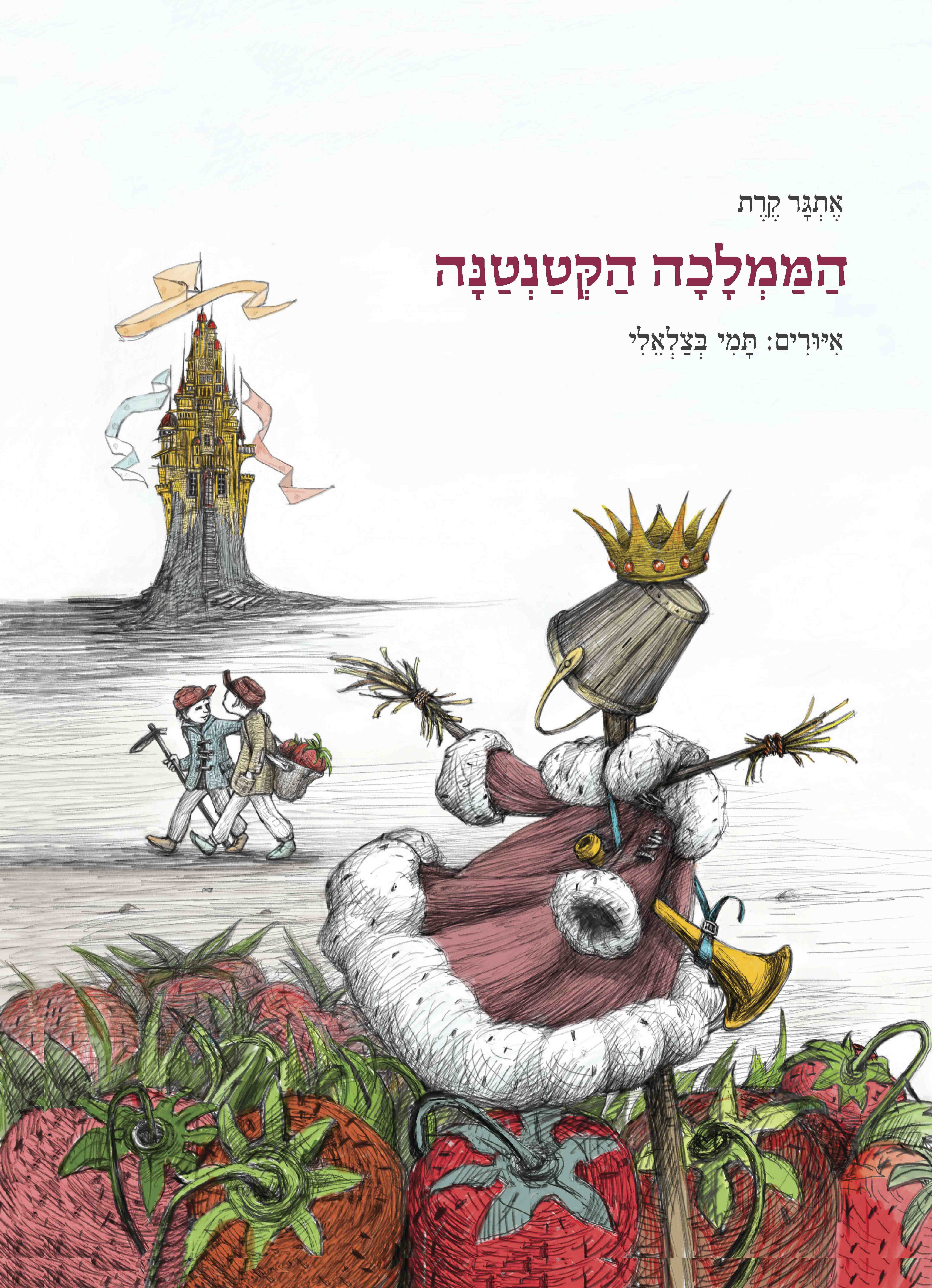 The Teeny-Tiny Kingdom
The Teeny-Tiny Kingdom 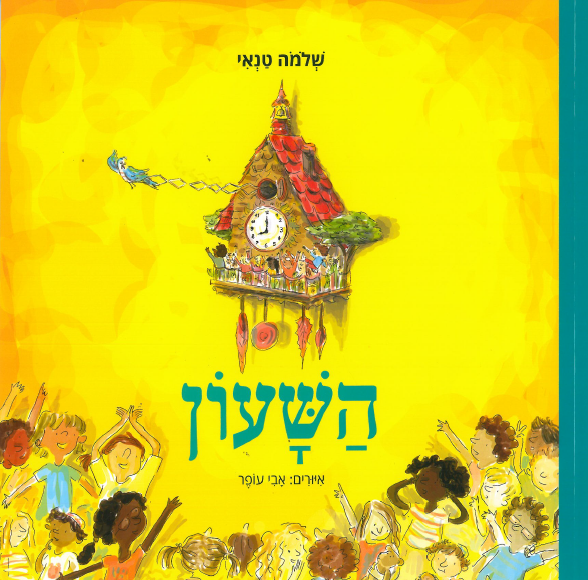 The Clock
The Clock  קְרִיאָה
קְרִיאָה שִׂיחָה
שִׂיחָה יְצִירָה
יְצִירָה חֵקֶר
חֵקֶר שֵׁמַע
שֵׁמַע הַשְׁרָאָה
הַשְׁרָאָה מִשְׂחָק
מִשְׂחָק סִרְטוֹנִים
סִרְטוֹנִים הַעֲשָׁרָה
הַעֲשָׁרָה כְּלָלִי
כְּלָלִי לָצֵאת הַחוּצָה
לָצֵאת הַחוּצָה הַמְחָשָׁה
הַמְחָשָׁה שִׁלּוּב הַסֵּפֶר
שִׁלּוּב הַסֵּפֶר חֲגִיגָה
חֲגִיגָה

